

How to Elaborate
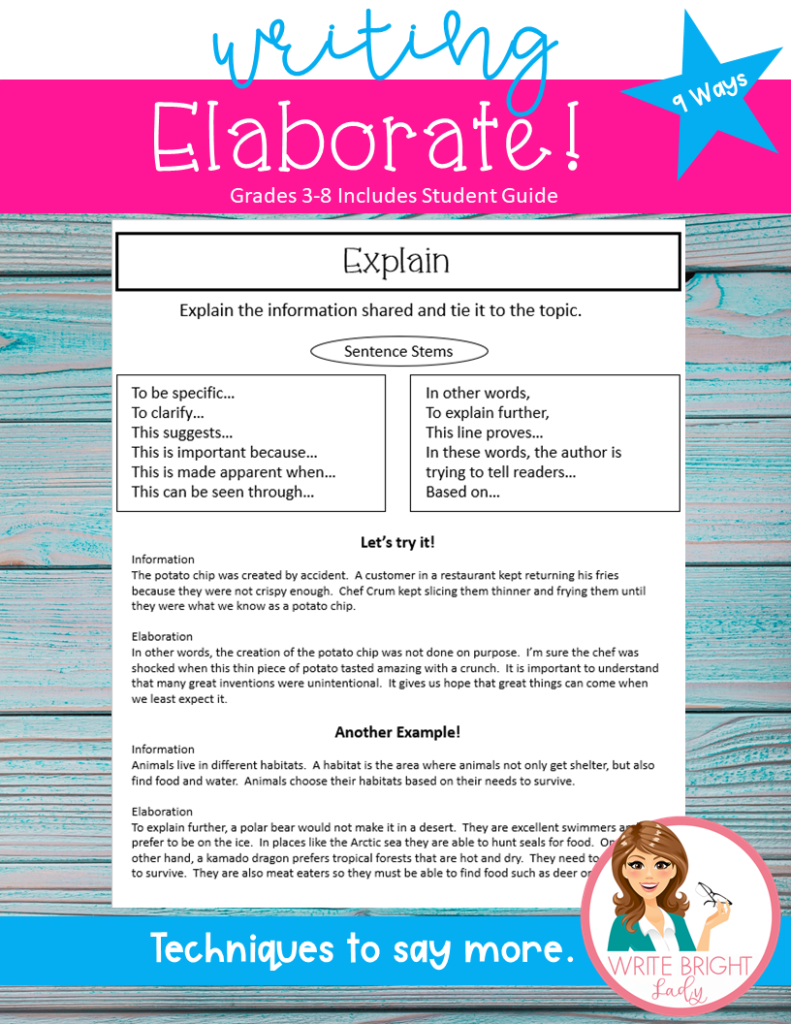
Do your students struggle with what it means to elaborate? In this post, we will look at types of elaboration, how to elaborate on evidence, how to elaborate in an essay, elaborations strategies, and elaboration stems. Elaboration does not have to be a stumbling block for your students. There are simple ways to spark them into elaborating. Being able to elaborate in their writing can be the difference in a good and outstanding test score.
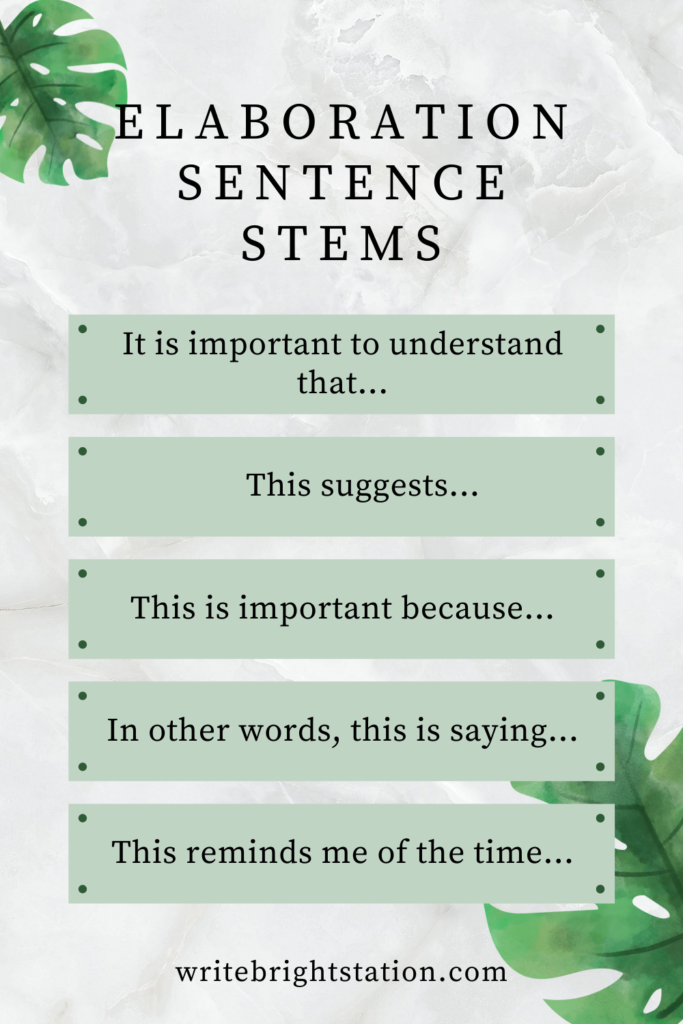
How to elaborate on evidence
Give me more I say! Students understand the concept of pulling information from the text, but then they freeze up when they have to write more about it. Elaborating is providing more details about the subject. The problem is, some thinkers see things as black and white. Their thoughts: What more is there to say? This is where teaching elaboration techniques can open a new world for these thinkers. They don’t see a reason to say more or to explain so let’s give them a reason. Below I will give some of my strategies that can be taught one at a time and practiced.
Types of Elaboration
Whether responding to a prompt or text-based writing, these techniques for elaboration can take the guesswork out of what to write. Here are some of my favorites.

How to elaborate in an essay
Evidence: The text shares that Shah Jahan loved his wife so much that when she died, he wanted to bury her in a grand place. He built the Taj Mahal as a mausoleum to show how much he loved her.
Elaboration: Talk about a grand gesture. The Taj Mahal is a huge tourist attraction to this day. It is well-known for its beauty. If his wife only knew the lengths Jahan went to give her the best burial possible. People are still talking about it 400 years later. That is a memorable burial for certain.
Evidence: The source boasts that New York City puts on the World’s Biggest Marathon. Often times there are over 50,000 runners participating from all over the world. This doesn’t account for the two million spectators that enjoy cheering.
Elaboration: Are they serious? Trying to imagine a sea of thousands of people racing seems overwhelming. Not to mention for 26 miles. This is true dedication on the part of these runners. They are willing to pound the pavement surrounded by so many strangers. A marathon on its own is challenging, but to do it with that many people seems like a true commitment.
Similar Posts
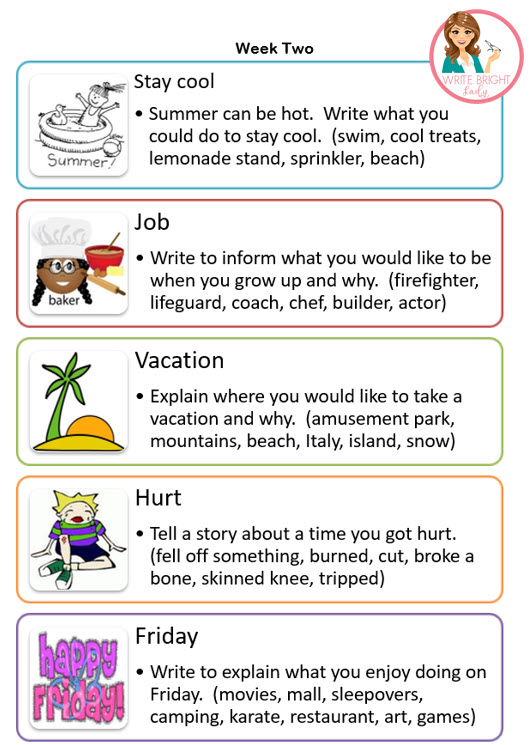
Writing to Prompts
Writing to prompts is a great way for students to begin the day with a quick writes experience. Give brainstorming ideas to boost learning.
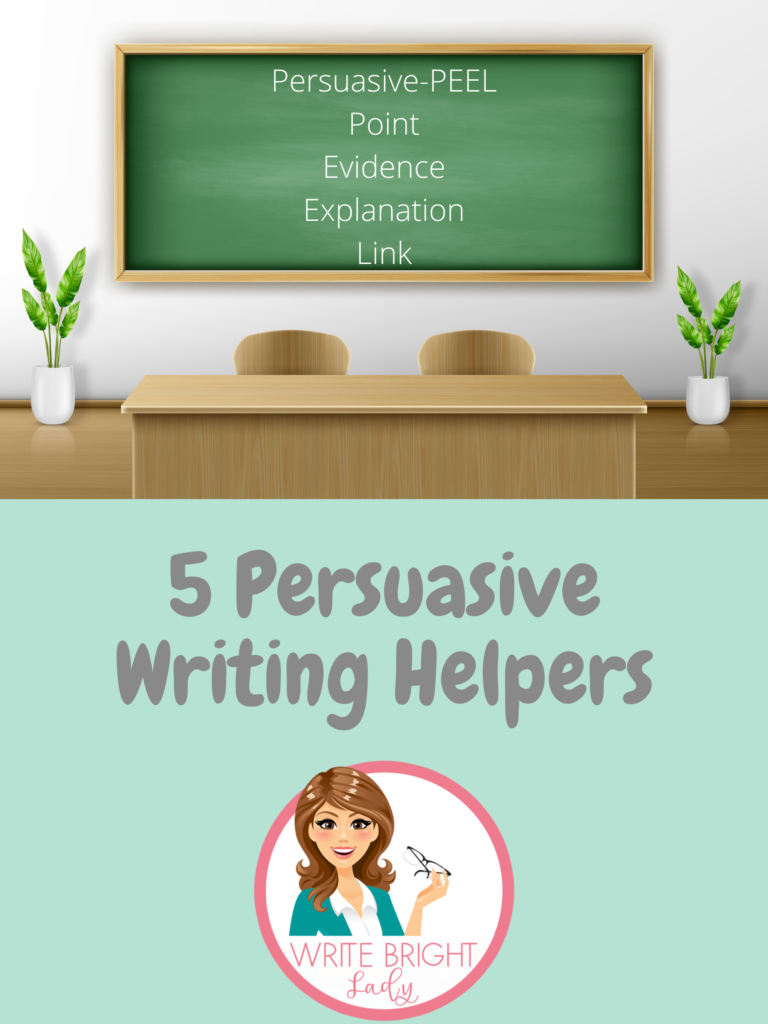
Top 5 Helpers for Persuasive Writing Essays
Writing in elementary school can be challenging, especially when it is time for persuasive writing essays. There are many techniques for persuasive writing essays, words for persuasive writing essays, and persuasive how to guides. Where should you start? It all depends on what you are looking for. Are you trying to raise writing scores, meet…
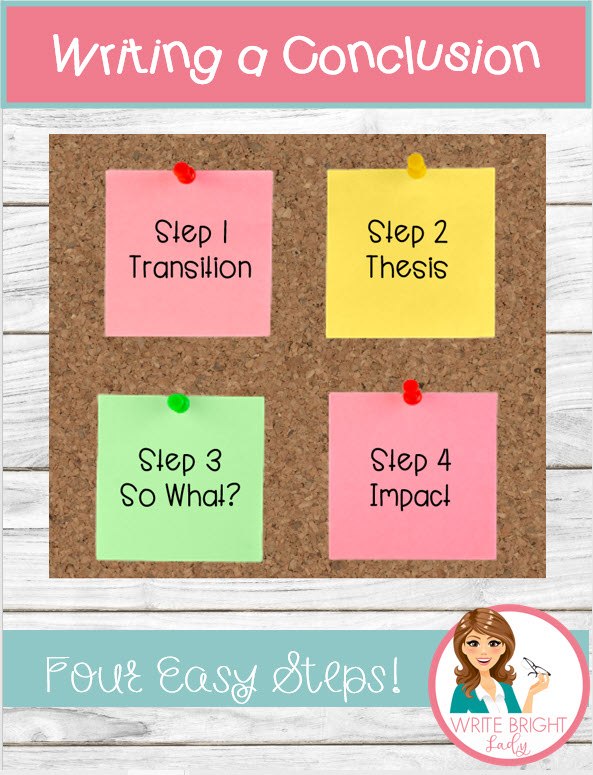
How to write a conclusion for essay assignments
If you are looking to teach how to write a conclusion for essay assignments, you have come to the write place…I mean, right place. When teaching how to write a conclusion for essay assignments all you need to do is teach the following steps. Remember, conclusions are not meant to be long. When working on…
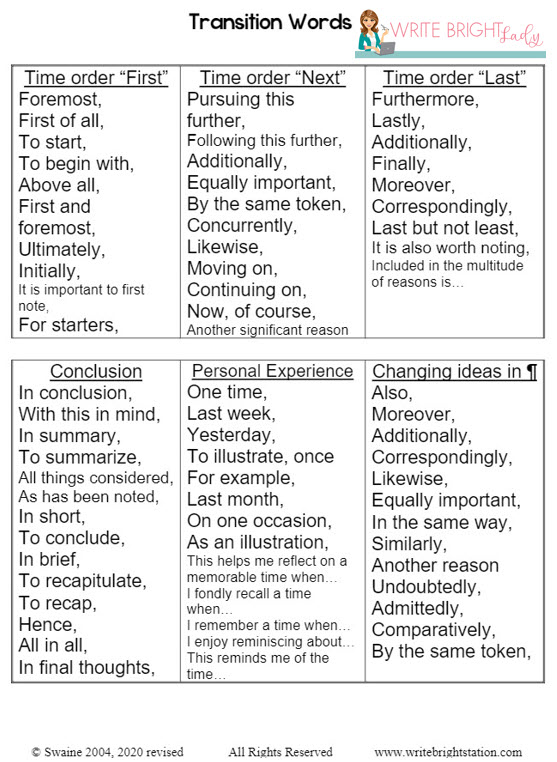
Example for Expository Writing
What’s Expository Writing Many teachers and students want an expository writing def to make things clear. They want to know what’s expository writing, view an expository writing sample, view an expository writing essay, see topics for expository writing, format for expository essay, and obtain a list of expository writing transition words. This post will cover…
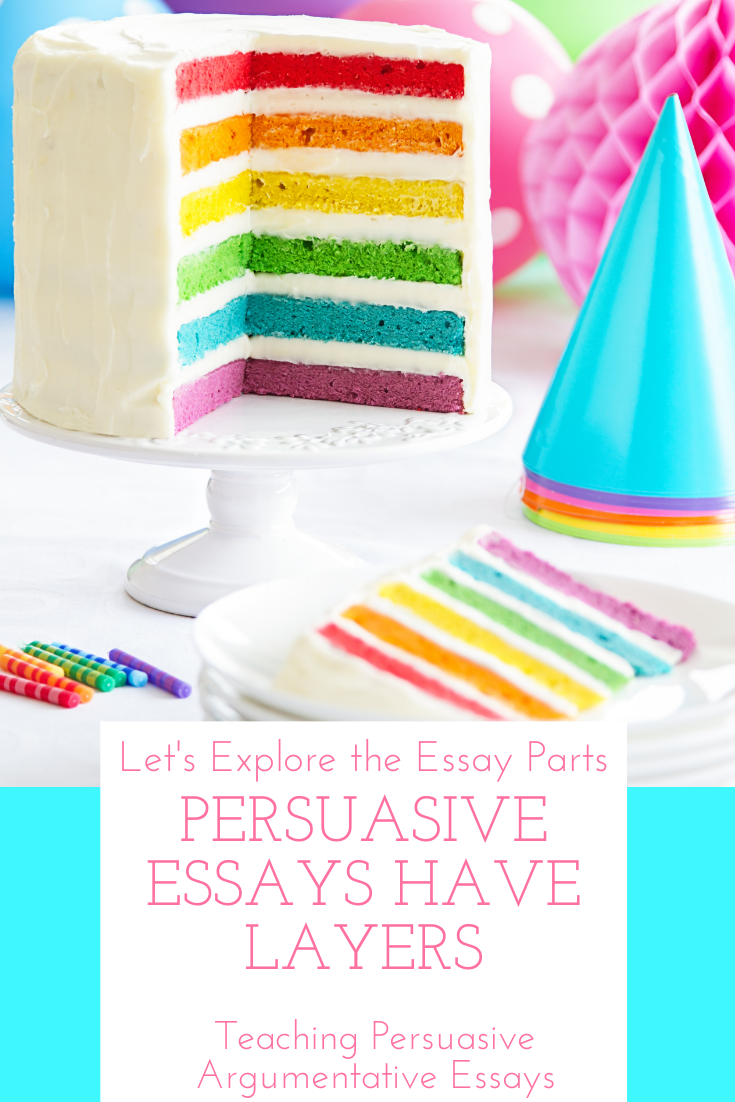
Example of Persuasive Essay
What Persuasive Writing Entails Many students wonder what persuasive writing a.k.a argumentative writing entails. This post will give an example of persuasive essay elements, persuasive topic choices for those searching for a topic for persuasive writing, persuasive writing prompt examples from my collection of persuasive writing prompts for 5th grade, techniques of persuasive writing, graphic…
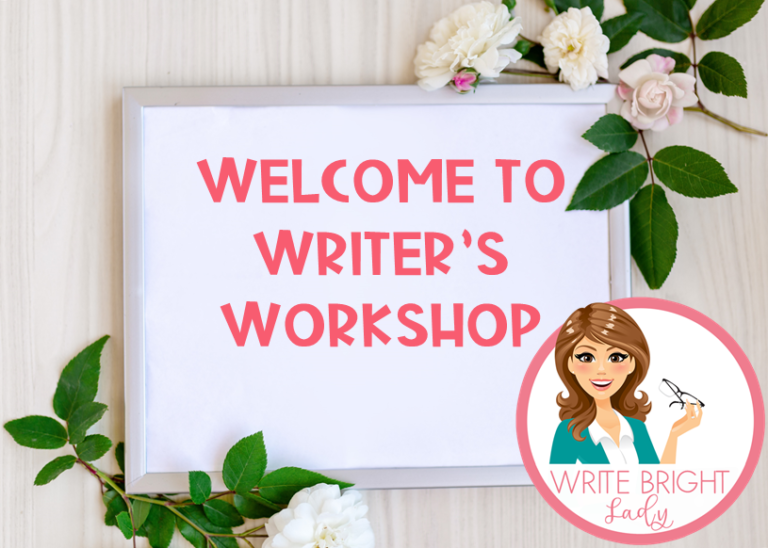
How Teach Writing (minus the “to”)
The How Teach Writing in this post must have the “to” missing for SEO, so there’s that! Now that we’ve uncovered the Case of the Missing “to,” let’s dive into how teach writing. Yep, let’s just put the “to” back in to make us all happy. Let’s explore how to teach writing. Like it or…

How to Teach Elaboration in Writing

Let’s start with identifying what elaboration is in terms of writing. Just so we’re clear. Elaboration is the process of presenting and developing an idea. Elaboration is also adding more detail to better explain what has already been said. Elaboration looks different depending on the genre in which you are writing.
- In Narrative , elaboration means to be more descriptive and help the reader feel like they are in the story.
- In Informational , elaboration means to explain the main idea in depth using key details that also describe or develop the topic.
- In Opinion , elaboration means to really dig into the reasons that support your opinion and support your opinion.
For the purpose of this blog post, I am going to focus on elaboration in reference to Informational and Opinion writing.
What is the difference between evidence and elaboration?
Another great way to think about the relationship between evidence and elaboration is that the evidence is WHAT is important. The elaboration is WHY it is important.
One common misconception I want to get out of the way is that evidence and elaboration are two different things. This isn’t quite true. Elaboration says more about the evidence. However, depending on the writing task, there could be more evidence that elaborates on a prior piece of evidence.

Part of what makes writing so difficult is that it is SO abstract. By bringing the abstract to concrete, we make it accessible for our students. This activity is a fun (and yummy!) way to help your students brush up on their elaboration skills.
1// Students will need their writing notebook and a piece of candy. Starbursts are always a big win! If sugar or school policy is an issue, then choose a favorite healthy snack – goldfish, pretzels…it really doesn’t matter because you and your students are going to turn the ordinary into extraordinary.
2// Write a topic sentence at the top of their notebook page. This can be a simple main idea sentence. For example, “Starbursts are a type of candy.” I suggest you also model this using your writing notebook or chart paper.
3// Next, write a sentence that gives factual information supporting this. Explain what makes Starburst a candy. “They are made from sugar and come in a variety of flavors.” This is evidence that supports the main idea sentence.
4// Elaborate! Now, is where we can elaborate and say more about that one piece of evidence. Ask your students these 3 questions:
- Why does it matter?
So what they come in a variety of flavors? Who cares there are different flavors? Why does that even matter?
Invite your students to share their ideas about why different flavors matter. This is the elaboration. Use this as an overall discussion and brainstorm. You could be the facilitator of the discussion and have a student recording the ideas on chart paper or even open a Google Doc and display on your overhead to type it quicker. (Plus, you’ll get to hold onto it longer.) Don’t require students to write anything down just yet – they can, but it’s more important to participate in the discussion and create a buzz.
Use the responses below to get things started if your students have difficulty coming up with ideas:
- People like different flavors. For example, I do not like cherry – many people love cherry.
- This makes it easier to share with a friend.
- You can trade colors – it becomes a social experience.
- You won’t get bored by tasting the same old flavors all the time.
- You can make it educational by sorting the different colors.
- If you don’t like a certain flavor, then you can give it to someone else.
- You can learn more about your friends by figuring out what flavors they like.
- If you know that you like a certain flavor of the candy, then you might like the actual fruit. This could lead you to want to eat more fruit. And that’s healthy.

5// Flash Write! After students have had a chance to brainstorm ideas as a class, have them flash write for a few minutes to elaborate on their own. They can use the ideas you came up with together or come up with their own. Set a timer for 2-3 minutes and tell students to write as much as they can about Starbursts (or your topic). During this time, you can write as well to model that we are all writing right now. Or you can write for a little bit and then roam the room complimenting writers with words of encouragement. Do not worry about punctuation, spelling, etc. Just let them write. Also, be on the lookout for examples of student writing to share. Ask for permission to share their writing and then make a big deal about it! We’ll talk more mentor authors in the classroom below.

- So, what?
- Who cares?
- Why does it even matter?
I like to share these phrases with students to get their attention and also get them thinking about their evidence. These questions help push the writer to say more about their topic. With the Starburst activity, we used these questions to think about why do different flavors even matter? This pushed students to think beyond – “oh this is a great candy and it comes in different flavors.” Now that students understand elaboration more, we can look at specific strategies for elaboration. These notebook charts are included in my Informational Writing Unit.

- If…Then…
- Imagine That! (Or Imagine This!)
- Good Question
- Opposite Sides
- Call to Action
- This Matters…
I suggest teaching 1-2 elaboration strategies specifically, then have students put a star next to other ones they would like to try. The notebook charts stay in their notebook so that they have an example of the strategies for future writing.

If your students are having difficulty applying this to their writing, cloze writing is a great way to have students focus on a specific part of the writing. In a cloze exercise, a portion of language is missing and students complete it. This helps students practice a specific skill without having to worry about all of the other parts of their writing. This freebie is located in my free resource library. You can snag the freebie by clicking the link below. This is part of the freebie that you will find inside the Free Resource Library .

Color coding writing is a great way to help students “see” the different parts of their writing. The colors you use don’t matter, but be intentional, stay consistent, and use as few colors as possible. Otherwise, students get overwhelmed and confused.
I use this chart to help students identify the colors. Then, we use a mentor essay (usually mine) and color code. Some ways you can do this:
- Use an anchor chart.
- Use a Google Doc, Google Slide, or PowerPoint
- Use colored pencils and your writing notebook, written, or typed essay

You can use color coding while you are teaching or introducing elaboration, but it is also a great way to have students revise their writing. Having them color code their writing helps them to see what might be missing. And usually… it’s elaboration. 🙂

This is my favorite way to motivate students, get them excited about writing, and to also show them that they are writers and admired by others.
When you see students doing something specifically well, begin to showcase their work. And not just their whole essay – but when they are doing something specifically amazing. I typed these 4th Grade student examples up while teaching elaboration.
This helps other students see that if their peers can do this high-level work, then they can too. Plus, it’s a way to help them feel more confident in their work.
Another huge benefit for you and your students is that you are curating mentor texts and sentences of writing. I suggest saving these examples to use for modeling in the future and to have examples for yourself when it’s time to teach specific strategies.

(Side note: I collect student writing in a binder so that I always have examples. When you see your students doing something well, find a way to keep a copy of it. Copy student notebooks, have them type it up for you, or make it super easy and snap a picture!)
If you’d like more support when it comes to teaching writing, the TLL Membership might be right up your alley! The TLL Membership includes all of my writing resources including units that walk you step-by-step through the writing process. Click the link below to learn more about the TLL Membership:

Or check out the complete writing units below:

Happy Writing!
Erik the Linguist
Language learning, teaching, research and more., three ways to expand a paragraph: elaboration.

I previously talked about expanding a paragraph to avoid “one-sentence” paragraphs . Otherwise, the logical flow of ideas will not be clear.
This kind of paragraphing, as I recently found out, is called a Schaffer paragraph . It consists of 3-5 sentences, indicating the need to add concrete details and commentaries supporting the topic sentence, before wrapping up with a concluding statement.
For expanding a paragraph, there are three overarching strategies: elaborating, extending and enhancing (Halliday & Matthiessen, 2004). Each can be linguistically explained, and deserves a separate post.
This post will focus on the first “E”: elaborating.
Elaboration refers to how a meaning construed in one sentence makes that in the previous sentence clear. While this concept applies to relations between two clauses or combination of sentences, I focus on the elaborating relations between sentences here.
There are three kinds of elaboration, namely clarifying, explaining and exemplifying. You can find that each kind of elaboration has a representative Latin abbreviation.
- Exemplification (e.g.)
- Exposition (i.e.)
- Clarification (viz.)
Exemplification
Exemplification is straightforward: giving examples. When the topic sentence covers a broad concept or an author’s initial comment, this can be considered an “inductive argument”, requiring evidence to support. For example:
See’s (2010) research discovered several types of abusive partners who resolve conflicts through abusive behaviors. For instance , they might have a low socioeconomic status, psychological disorder or “poor anger management skills” (2010). Sample from Student X
The more general noun phrase “several types” needs to be exemplified with more specific terms (text in bolded orange). The three terms are exactly how one demonstrates his/her disciplinary knowledge.
The transition markers for this type of elaboration are, obviously, for example, for instance, such as, like, namely, etc. But be careful to distinguish which is used for linking sentences, clauses or phrases. I’m not elaborating on this here.
Exposition seeks to illustrate something in simpler terms. This strategy usually happens when a topic sentence contains a long noun phrase, typically resulting from the “A is B” sentence structure that compresses meaning from a clause into a noun phrase.
The notion of possibilities for self-hood resonates with Gee’s (1990) notion of “‘Discourse with a big ‘D’” as an “identity kit” (p. 142) . That is, Discourse is not just a set of textual features but it embodies socially shared assumptions and practices that allow people to construct their identity or ways of being in society. (Matsuda, 2015, p. 144)
The first sentence proposes two technical terms “Discourse with a big ‘D'” and “identity kit”. They deserve a “paraphrase” in the subsequent sentence:
- Discourse with a big ‘D’: not just a set of textual features… socially shared assumption and practices
- Identity kit: to construct their identity…
Aside from the abbreviation, exposition is usually signalled with transition markers such as in other words, that is to say, put simply, etc. This relation seeks to simplify arguments “in English” to help laypeople understand.
Clarification
Clarification seeks to make something precise in the subsequent sentence, which backs up the first sentence as an explanation or a comment.
The partner having greater authority for assessing family’s resources could use this as a means to exact control on the others in the family. In fact , the power of assessing resources is possibly a matter of culture legacy, as Kirkwood indicated “women’s social dependency on men, as prescribed by cultural roles” (1993). Sample from Student X
The second sentence elaborates on “authority for assessing family’s resources” with a quote from an external source, explaining it from a cultural perspective.
The relevant transition phrases can be to be precise, indeed , in fact , and so on. Interestingly, this kind of elaboration may suggest an opposite meaning in the subsequent phase, showing that this is a “more precise” statement, e.g. They weren’t show animals ; we just have them as pets . (Example from IFG3, p. 399)
Using these three types of elaboration strategies requires us to recognise that a sentence is a topic sentence or one that deserves some explanations. The above examples show that elaboration is indeed a way for one to demonstrate his/her subject knowledge and thinking processes.
It’s a bit long today. Next up will be the second “E” — Extension.
References Halliday, M. A. K., & Matthiessen, C. M. I. M. (2004). IFG3 . London, United Kingdom: Oxford University Press. Matsuda, P. K. (2015). Identity in Written Discourse. Annual Review of Applied Linguistics, 35 , 140-159.
Share this:
- Click to share on Twitter (Opens in new window)
- Click to share on Facebook (Opens in new window)
- Click to share on Pocket (Opens in new window)
- Click to share on LinkedIn (Opens in new window)
- Click to share on Pinterest (Opens in new window)
- Click to email a link to a friend (Opens in new window)
- Click to print (Opens in new window)
[…] for breaking a text randomly. There should be one logical, coherent idea throughout, with certain elaboration, extension, enhancement, and/or if you like, projecting ideas from other […]
[…] the previous post, I started talking about the first kind of expansion, elaboration, to ensure ideas can be made […]
[…] shows that normally after the topic sentence, the subsequent sentence gives a more specific detail (elaboration) or reasoning (enhancement) to it before moving […]
[…] task with a more positive attitude and give you the motivation to keep trying until you succeed. According to a study by Stanford University, having a growth mindset, which means believing that you…1 Therefore, changing your self-talk from “I cannot” to “I have not yet” can make a big […]
Leave a comment Cancel reply

- Already have a WordPress.com account? Log in now.
- Subscribe Subscribed
- Copy shortlink
- Report this content
- View post in Reader
- Manage subscriptions
- Collapse this bar

Classroom Management
Community building, virtual teaching, strategies for adding details and using elaboration in writing.
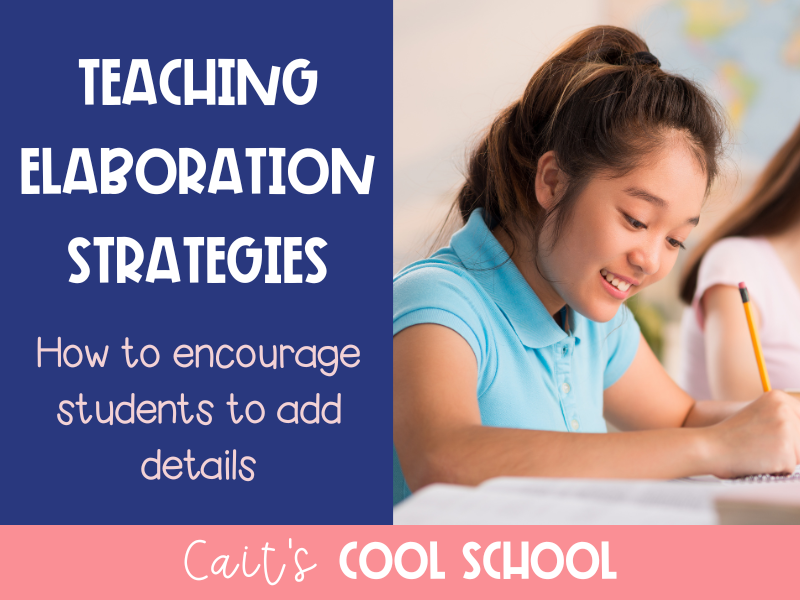
Adding Details in Writing
One of my biggest pet peeves in writing is when a student will rewrite the exact five sentences from their graphic organizer, call that a paragraph, and tell me they’re finished. Getting students to elaborate and add details to their writing has been extremely challenging. It’s been helpful to introduce different strategies and spiral back as needed.
Elaboration Strategies:
- Asking questions. Students can ask where, how, what kind, and why to add more details. While the added details (and specific questions) may look different in a narrative vs. an informational writing piece, the strategy works either way. While this strategy can be the most helpful, students can be stuck looking at their own writing because, in their minds, they know the answers. It helps to have students peer edit or to conference with them to provide questions.
- Show, don’t tell. Instead of saying “Ryan is angry,” show his emotions by describing his face, body language, actions, and words. “Ryan’s face was red. With his fists clenched, he bellowed, ‘Stay away from me!’”
In nonfiction writing, this might mean describing a scenario to support an idea. For example, instead of telling, “The giraffes at the Austin Zoo were happy with their new feeding,” show by saying “The giraffes at the Austin Zoo played with their new food maze box everyday and didn’t need to lick the bars of their cage. They also eagerly accepted food from the visitors, now allowed to feed them.”
- Adding support from text. For any nonfiction writing, students can do research to find more facts to support their opinion or give additional information on a topic. In narrative writing, students could research more about a specific setting to add details. This would be important (and helpful!) if they’re writing a historical fiction story.
- Adding support through personal stories. This strategy works when students have experience with a topic. In a narrative, while writing about a school scenario, students could use their experience to add details about what the classroom looks like or what happens at recess. In a nonfiction piece about whether students need a bedtime, they can include whether or not they have a bedtime and how it affects their day.
- Adding support through personal research. This strategy became my new favorite this past year. When writing opinion pieces about a topic related to them, I allowed my students to poll the class. Then I modeled how to include that information. For example, in an opinion on whether dogs or cats make better pets, one student found that 15 out of 21 classmates preferred dogs. Their added detail became “In a fourth grade class, 15 out of 21 students agreed that dogs make better pets.” Another way to add this type of research is letting students interview each other (or anyone knowledgeable about the topic, like another teacher or an adult at home) and then including a quote from their personal research.
- Providing a related word bank. This isn’t a strategy students can always do on their own, but through no fault of their own, students may be lacking the vocabulary to add more. Identify what kinds of words are lacking. In narrative writing, it can simply be adjectives. With informational writing, it may be more topic based, such as animal-related words or technological terms.
- Peer editing. Let students read each other’s writing, and then find places where their partner could use one of the strategies above. After introducing a strategy and letting students try it on their own, I like having them practice the same strategy on a peer’s writing. This works pairing writers of similar or different abilities. If I pair two struggling writers, then I usually help to facilitate those groups to make sure they’re able to really practice whatever strategy we’re focusing on.

Using these writing anchor chart bookmarks helps my students remember the different strategies we learning throughout the year, from elaboration to revising & editing.
Focusing on elaboration.
Besides adding new strategies for elaboration each time, I love using a writing unit that focuses mainly on description . Bonus? It gives students the chance to draw some monsters! The goal is for students to be able to write a paragraph (or two) to describe their monster so well that another student could draw their monster using the written description. If the paragraph is descriptive enough, the pictures will match! If not, it’s back to the editing/revising phase where more details are added.
First, I model drawing from the description while my students read to me (and critique my direction following!), and then they try reading and drawing another monster. After that…it’s their turn!

This is my monster I created as a model. You can make your own…or use the two model monsters & paragraphs in the unit.

This full unit includes...
✔️ Unit Plan
✔️ Printables for Modeling & Partner Work
✔️ Graphic Organizer
✔️ Drawing Paper
✔️ Decorative Final Copy Paper
✔️ Extra Activities, including a mini book about your monster!

Need help organizing your writing lessons? Check out this free minilesson planning template to keep your lessons on track.
- Read more about: upper elementary , writing
You might also like...

Seven Ways to Assess Comprehension for a Novel Study

Five Novels for Teaching Character Traits

Looking for Something?
- Privacy Policy
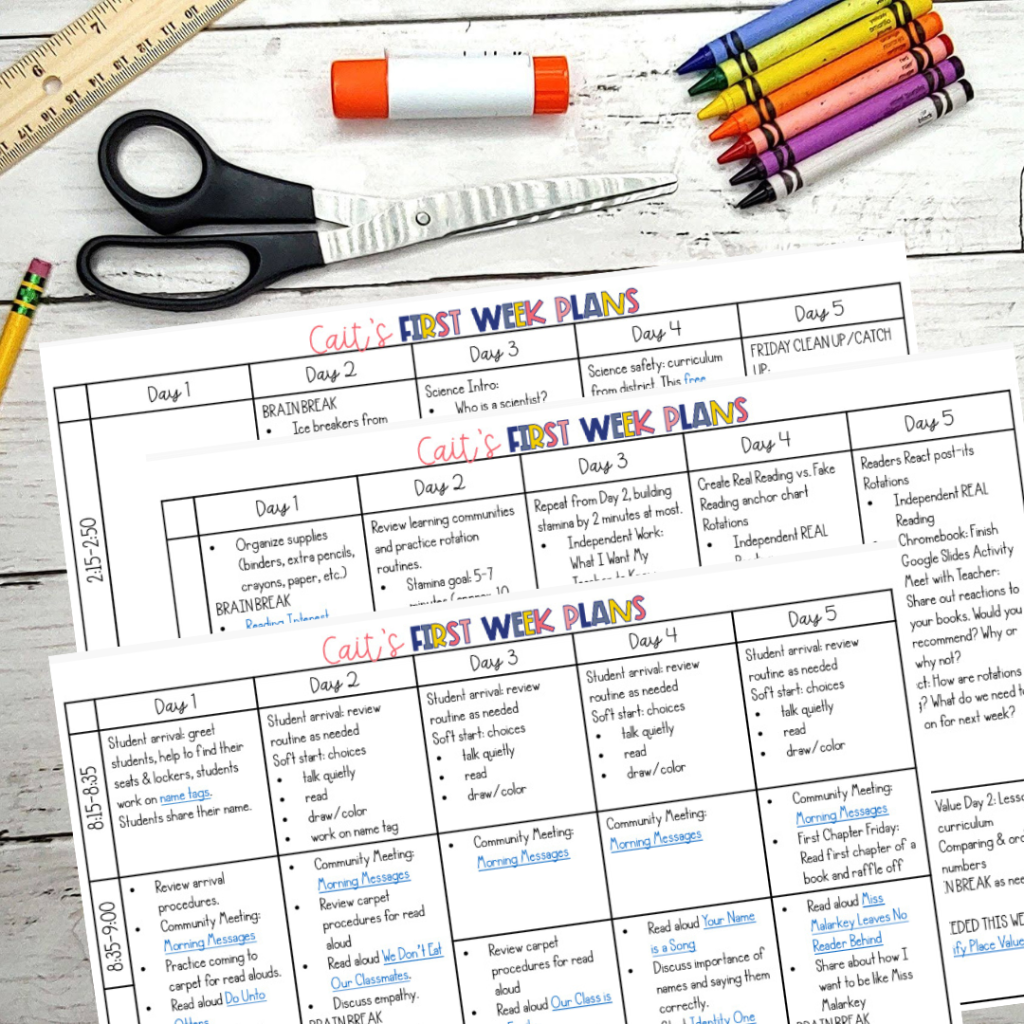
Have you heard? Get back to school ready now.

Elaboration Sentence: What It Is And How to Use It
An elaboration sentence is a practice of illustrating your write-up with details to enhance its quality. Learn here the different methods.
Elaboration means expanding the sentences to express them with clarity. The elaboration helps to enhance the readers’ understandability and provide clarity to your write-up. Read along the article to understand elaboration sentences and how you can use them in your writing.
What is an Elaboration Sentence in Writing
Elaboration is the process of explaining a sentence with further details. The addition of details to the given information helps to enhance clarity and make your writing impactful.
Elaborating a sentence depends on the purpose and the need of the audience. Generally, sentences can be elaborated using real-life experiences, definitions, examples, facts, stats, anecdotes, scenarios, quotations, etc.
Example – “Saw one mouse”
The above sentence makes no sense as it doesn’t convey who saw the mouse, when and where they saw it, and why they have seen it.
However, if you elaborate the sentence into
“Jack saw a mouse yesterday near his house as the surroundings were filled with litter.”
The sentence is clear now, conveying that there was litter around Jack’s surroundings. Thus, he saw a mouse nearby.
The rule of thumb for elaborating on a sentence is to ask yourself whether the sentence makes any sense. This will help you convey the whole idea.
Elaboration of a Sentence Based on the Genre of Writing
- Narration- While narrating an incident, elaboration of a sentence depicts describing an incident that allows readers to imagine the situation and feel like they are in the story.
- Informational- While elaborating a sentence that intends to educate the reader, the writer needs to ideate all the details and put them into a single frame.
- Opinion- When you are presenting an opinion through your writing, you need to delve deep into the details to bring out the reasons that support your argument.
How to Use Elaboration Sentences?
Ask Questions – Ask what , why , and how while writing.
These questions help the writer to think about the topic and elaborate sentences. They integrate all the information that’s required to convey the topic effectively.
For instance, let’s talk about Hydroponics.
Assume that you have got a question in your exam asking you to write a short essay about hydroponics. So what would you think of hydroponics?
Will you write two lines describing the word hydroponics and leave it? If you do so, you will lose your score. Then what’s the best way to answer this question?
It’s simple! Elaborate on Hydroponics using the questions “what, why, and how.” By asking these questions, you will be able to cover the following.
- What – What is Hydroponics – Definition, examples
- Why – Why you need Hydroponics – its advantages
- How – How you can practice hydroponics – different methods of hydroponics and plants that can be grown through these methods
And with this, your argument will be complete, covering all the critical information, and will help the reader understand the concept of Hydroponics better.
Other Strategies to Elaborate a Sentence
- Explanation – Simplify your topic by expanding on what you mean to convey.
- Description – Convey the topic using adjectives, metaphors, and related elements to enhance its quality.
- Illustration – Integrate examples to present your topic and increase its understandability.
- Imagination – Imagine yourself in the shoes of a reader and write about what you would like to know about the topic.
- Adding Experiences – Add experiences to your writing to show authenticity and clarity.
- Counteraction – When you are writing something, think of the opposite. This will give you a critical analysis of the topic and help you in the elaboration of a sentence .
- Reflection – Show how the topic impacts the reader.
- Prediction – Tell the reader about what they can expect from your write-up.
- Comparison – Differentiate between two subjects, show them how they are relatable, and connect the dots.
- Call to action – Think and write about what your readers need to perceive and act upon.
A picture is worth a thousand words
What if you have a magic pill to polish your writing and make it clearer and more concise? Would you take it or not? Mind the Graph is that magic pill to all the researchers that makes their writing simple yet impactful with visually appealing infographics. Sign up now and make your writing process easier.

Subscribe to our newsletter
Exclusive high quality content about effective visual communication in science.
Sign Up for Free
Try the best infographic maker and promote your research with scientifically-accurate beautiful figures
no credit card required
About Sowjanya Pedada
Sowjanya is a passionate writer and an avid reader. She holds MBA in Agribusiness Management and now is working as a content writer. She loves to play with words and hopes to make a difference in the world through her writings. Apart from writing, she is interested in reading fiction novels and doing craftwork. She also loves to travel and explore different cuisines and spend time with her family and friends.
Content tags
- +44 (0) 207 391 9032
Recent Posts
- Why Is Your CV Getting Rejected and How to Avoid It
- Where to Find Images for Presentations
- What Is an Internship? Everything You Should Know
- How Long Should a Thesis Statement Be?
- How to Write a Character Analysis Essay
- Best Colours for Your PowerPoint Presentation: Top Colour Combinations
- How to Write a Nursing Essay – With Examples
- Top 5 Essential Skills You Should Build As An International Student
- How Professional Editing Services Can Take Your Writing to the Next Level
- How to Write an Effective Essay Outline: Template & Structure Guide
- Academic News
- Custom Essays
- Dissertation Writing
- Essay Marking
- Essay Writing
- Essay Writing Companies
- Model Essays
- Model Exam Answers
- Oxbridge Essays Updates
- PhD Writing
- Significant Academics
- Student News
- Study Skills
- University Applications
- University Essays
- University Life
- Writing Tips
Focus on directive essay words: “elaborate”
(Last updated: 7 May 2021)
Since 2006, Oxbridge Essays has been the UK’s leading paid essay-writing and dissertation service
We have helped 10,000s of undergraduate, Masters and PhD students to maximise their grades in essays, dissertations, model-exam answers, applications and other materials. If you would like a free chat about your project with one of our UK staff, then please just reach out on one of the methods below.
What does it really mean to elaborate?
The answer to this question is twofold. On one hand, elaboration is an essential part of writing. It allows you to clarify points that you are trying to make and provide additional details. On the other hand, with an essay that is a few hundred words short of the final word count, elaboration can bring it up to the threshold without monotonous repetition or duplication. Yet doing well at elaboration in an essay can be challenging for novice writers. This is because they tend to provide too much description, which takes away from the evaluative and analytical components of the paper. Elaboration can also be difficult for people who see things in terms of black and white, because the literal nature of such a position makes elaboration particularly challenging.
Elaboration generally comes at the end of a paragraph, or in some cases, towards the latter half of the essay . The justification for this is that it is difficult to elaborate on something that you have not previously defined. There are two main elements that need to be discussed with respect to elaboration: sufficiency and relatedness. Sufficiency is the amount of detail. A question that the writer might consider for this is, have I provided enough detail for the reader to construct a picture in his/her mind? When considering this in terms of expository writing, sufficiency is more than just stating your purpose or persuading your audience; it also means that credible and accurate points are made. An essay that is sufficient, however, is only halfway complete. Yes, word count is important, as it means the quantity component has been met, but as a writer, you must always be concerned with quality
Quality is essentially a component of relatedness. When we discuss relatedness in terms of elaboration, we are really focusing on the quality of the details and their focus to the main topic. Good writers include details; great writers include only relevant details that will strengthen the focus of the paper . The quality of the elaboration is really going to depend on how strong the initial argument is. This is primarily because in order to maintain the focus of an argument, the argument has to be inherently clear.
So if you know that you need both quantity and quality to provide sufficient elaboration, the next question becomes, how can you achieve this? There are really two solutions. To let someone else read your draft and ask questions, or (preferably) learn to ask those questions of yourself. For the most part, a good essay will be readable to both those within your subject area and those outside of it. Therefore, anyone might be able to read your draft and ask questions. Some of the more basic questions are going to be the ‘w’ questions, so who, what, where and when, but these are largely descriptive. It is going to be the why questions that are the most likely to add value to your writing.
There are usually three types of essays where elaboration is essential: narrative, argumentative, and informational writing. Each offers a slightly different perspective on what elaboration means within the context of the overall paper. For narrative writing, the mantra of the writer should be ‘show not tell’. As a writer, it is your job to paint a visual picture in the mind of the reader. Therefore, the language associated with elaboration should relate to explaining characters’ feelings and thoughts, thus painting sensory descriptions within the paper. The elaboration of narrative essays also requires description of actions, physical states or internal states. With actions, the writer might tend to focus on breaking down a pivotal moment into logical and organized replays. With physical states, the writer might elaborate on what things in the story sound like, smell like, taste like and feel like. In this type of elaboration, similes and metaphors can be particularly useful. Finally, with internal states in narrative writing, your goal is to write what cannot be seen (e.g. to explain in writing what a movie might have to leave out). Narrative writing uses specific dialogue to explain a character’s personality, thoughts, and feelings. By doing this through elaboration, background information can be provided that contributes to the story.
Argumentative writing works slightly differently and the elaboration is similar to expository writing. For this type of writing, information is crucial as the use of facts, statistics, and examples offer crucial strategies for elaboration. Again, here, we revert back to quantity and quality. When looking for information, you need to be able to find enough of it and find stuff that is relevant. It is here that it is important to stress research skills. Being able to locate resources from books, journal articles, and other credible sources of information are essential to the elaboration process. Once locating these relevant sources, the next essential component is separating the good stuff from all the rest. This is done, to some extent, through selective reading, but also through good summarizing skills. This type of elaboration is a skill that needs to be learned and practiced.
The other type of writing is informational writing. This, while possibly easy, can also be really challenging when it comes to elaboration, because there are only so many details that can be provided to the reader. In this instance, elaboration might come through figures and tables, or through additional statistics that contribute to the overall article.
We have talked in this post about elaboration and what it really means. A great writer uses elaboration for clarity and not to simply meet the word count (though this is a nice benefit). You must consider quantity and quality by making sure that your examples are the best possible ones you can put together. Details are important. In a narrative essay, details come in the form of character/plot development. In an argumentative essay or an instructional essay, you may need to rely on facts, statistics, and tables. Finally, make sure that you acquire the skills you need to be a good researcher, because if you can find the good information and summarize well, you are going to end up with pretty great elaboration skills!
Focus on directive essay words: “compare and contrast”
Essay question words: “critically evaluate/review”, focus on directive essay words: “to what extent…”.
- academic writing
- writing a good essay
- writing tips
Writing Services
- Essay Plans
- Critical Reviews
- Literature Reviews
- Presentations
- Dissertation Title Creation
- Dissertation Proposals
- Dissertation Chapters
- PhD Proposals
- Journal Publication
- CV Writing Service
- Business Proofreading Services
Editing Services
- Proofreading Service
- Editing Service
- Academic Editing Service
Additional Services
- Marking Services
- Consultation Calls
- Personal Statements
- Tutoring Services
Our Company
- Frequently Asked Questions
- Become a Writer
Terms & Policies
- Fair Use Policy
- Policy for Students in England
- Privacy Policy
- Terms & Conditions
- Editing Service Examples
- [email protected]
- Contact Form
Payment Methods
Cryptocurrency payments.
Writing Studio
Analysis and elaboration.
In an effort to make our handouts more accessible, we have begun converting our PDF handouts to web pages. Download this page as a PDF: Analysis and Elaboration Return to Writing Studio Handouts
One of the most frequent comments professors make about student writing is “needs more analysis,” or “elaborate upon this point further.”
This is good! Essentially the professor is asking you to think harder and deeper about what you are saying: you have made an interesting or important point, but there’s more to it than you’ve indicated or maybe even realized.
Below is a valuable approach you can use to help develop your ability to analyze and elaborate.
Need to Analyze and Elaborate? Ask Probing Questions
Unlike yes-or-no questions with a clear answer, hypothetical questions that call for speculation, or rhetorical questions for which answers aren’t necessarily sought, probing questions are intended to make you think more deeply about the matter at hand.
Probing questions usually follow from questions that seek an initial description or assessment of an issue, and take you from there to the heart of the issue in greater depth and complexity.
Examples of probing question include:
- Why do you believe X to be the case?
- What makes you describe or characterize X in this way?
- What is another way to think about X?
- What would have to happen for X to be different?
Case Study: Practice Posing Probing Questions
Try posing such questions to yourself in the following case study.
In F. Scott Fitzgerald’s short story “May Day,” it’s 1919 in New York City and, with World War I nearing its conclusion, a Yale alumni group is hosting a big formal. This well-heeled crowd is partying a little harder than it should, and Peter Himmel has drunkenly wandered down a back hallway; he spots two men hiding in a janitor’s closet who, unbeknownst to Peter, are two soldiers, Private Rose and Private Key. They were discharged from the front lines only three days previous and have managed to sneak into the Yale party; they are tired, hungry, and traumatized by their experiences in battle. Peter engages them in friendly conversation:
“Now,” continued Peter easily, “may I ask why you gentlemen prefer to lounge away your hours in a room which is clearly furnished, as far as I can see, with scrubbing brushes. And when the human race has progressed to the stage where seventeen thousand chairs are manufactured on every day except Sunday”– he paused. Rose and Key regarded him vacantly. “Will you tell me,” went on Peter, “why you choose to rest yourselves on articles intended for the transportation of water from one place to another?”
At this point Rose contributed a grunt to the conversation.
“And lastly,” finished Peter, “will you tell me why, when you are in a building beautifully hung with enormous candelabra, you prefer to spend these evening hours under one anemic electric light?”
Rose looked at Key; Key looked at Rose. They laughed; they laughed uproariously; they found it was impossible to look at each other without laughing. But they were not laughing with this man–they were laughing at him. To them a man who talked after this fashion was either raving drunk or raving crazy.
“You are Yale men, I presume,” said Peter, finishing his highball and preparing another.*
*Source: F. Scott Fitzgerald, “May Day” (1922), in Jazz Age Stories (New York: Penguin, 1998), page 247.
From what transpires here, a number of initial assessments can be made: this is a case of mistaken identity, Peter does not understand where Rose and Key are coming from, they laugh at Peter because he sounds like a pompous jerk, etc.
However, probing questions such as the following can help you arrive at a more detailed or nuanced analysis of what is taking place in this passage.
- What specific phrases in the passage support your assessment? Identify and comment on each.
- Why do Rose and Key laugh at Peter? List as many reasons as you can.
- What are the results of Peter’s incorrect assumption that Rose and Key “are Yale men”?
- Think about the larger context of this story, taking place as it does near the end of World War I. How does Peter’s claim that “the human race has progressed to the stage were seventeen thousand chairs are manufactured on every day except Sunday” fit in with this context or not?
Last revised: 07/2008 | Adapted for web delivery: 07/2021
In order to access certain content on this page, you may need to download Adobe Acrobat Reader or an equivalent PDF viewer software.
Trending Post : 12 Powerful Discussion Strategies to Engage Students

Teaching Elaboration in Writing
Looking for ways to help students with elaboration in writing? It’s a complex skill that requires mature thinking. In this post, you’ll find concrete ways to make elaboration in writing more manageable for all students.
Imagine you are providing feedback on an essay that reads like this:
One of the ways the author creates a foreboding mood is through elaborate setting descriptions. For example, the author writes, “The earth which formed the floor was cold and hard. We were entering the last resting place of the dead of the Montresor family” (Poe 70). The mood is foreboding. The author uses words that create a foreboding mood.
A couple of observations about this example…
For one, the elaboration is clearly circular and lacking. However, the student was able to identify and correctly cite text evidence to support an analysis of the mood. If your students are not able to identify text evidence yet, it’s better to begin there than with support for elaboration. Let’s look at some ideas.
IDENTIFYING TEXT EVIDENCE
Play detective..
Have students search for evidence in a whole-class text to support a claim you give them. Then, sort the evidence students find into solid evidence or that which is a stretch. If students put their evidence onto a shared doc, the white board, or a sticky note, it is simple enough to rearrange in a t-chart format. Need more scaffolding? Provide the evidence, and have students sort it.
As a class, re-read the text, looking specifically for evidence that would support a claim. Have students annotate or highlight lines that would work to support the topic sentence and claim. Try working through this together as a class to begin. Then, ask them to do the same thing for a different chunk of the text in small groups. Finally, you can have them finish individually if you think they are ready.
Show students different examples of text evidence for an example claim and its topic sentence. Ask students to discuss how they would rank this evidence from strongest to weakest. Which lines best support the topic sentence? Which are the least convincing?
Once students can correctly identify some textual evidence to support their topic sentence, it’s time to focus on elaboration in writing.
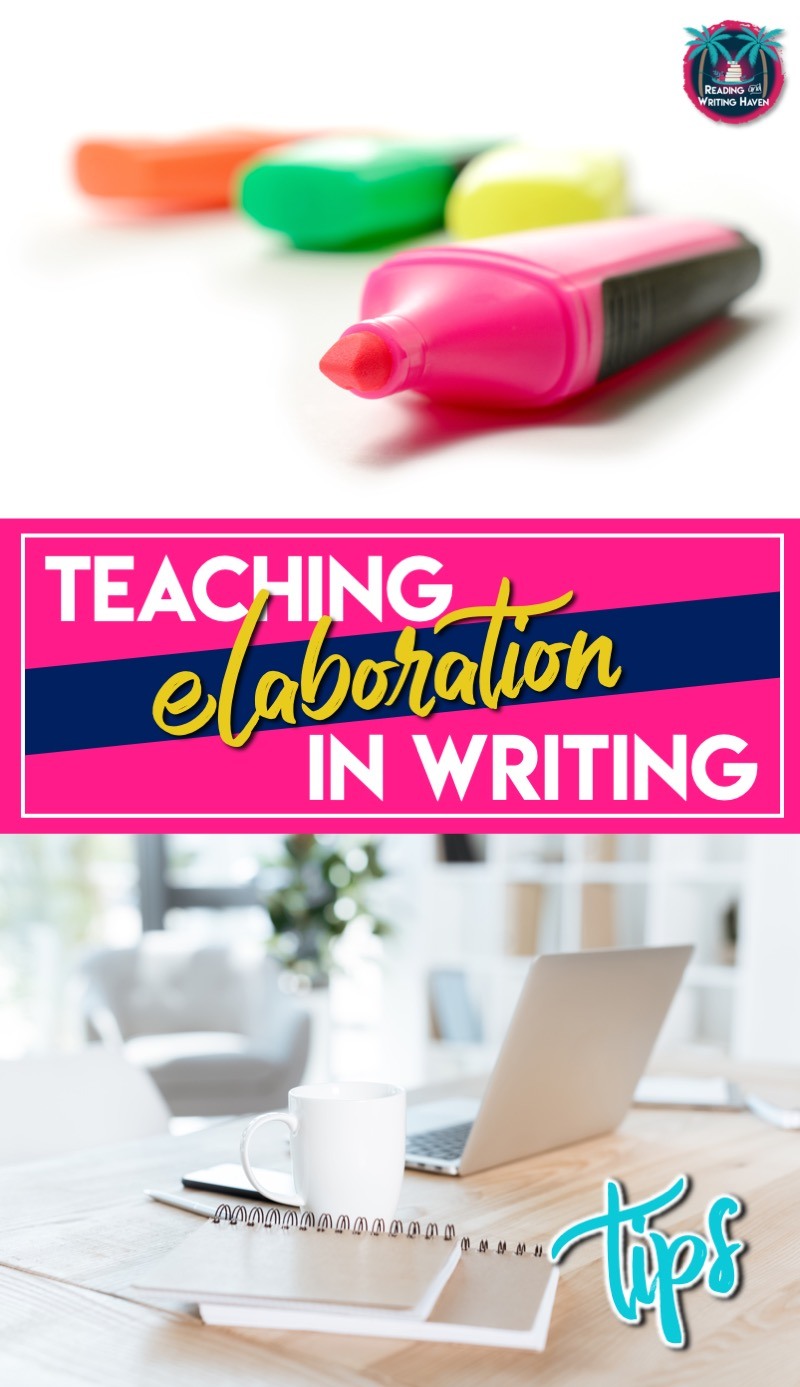
ELABORATION IN WRITING
One of the reasons I love slowing down my writing units is because it gives me time to confer. Instead of having students write their entire rough draft at once, go paragraph by paragraph, and as much as possible, give them feedback along the way.
This is what I ask students: “You argue that the author creates a foreboding mood through elaborate setting descriptions. Then, you write that one example of how the author does this is when they were entering the catacombs. Can you tell me why these lines make a foreboding feeling?” Almost every time, the student will either recognize that the text evidence does not support the topic sentence, OR the student will verbally explain to me exactly what they should have written in their paper.
Do this, not that.
Show students some parallel examples of elaboration. In one paragraph, show them what not to do. In the other, keep the solid elements from the first example but replace the elaboration with a good example. When we ground students’ understanding of elaboration in specific “dos” and “do nots,” it gives them a frame of reference to think back upon when writing their own examples.
Walk students through the process of elaborating by writing an example together as a class. Base your response upon a text the entire class has read or watched. Then, have students practice the skill under your supervision. Work with small groups to give them feedback before asking students to elaborate in writing independently.
Talk it out.
Students can often explain their evidence better when discussing it out loud than when writing. Break the writer’s block barrier by having students explain their evidence in a group or with you one-on-one.
Use prompts.
Teach students various methods for building upon their text evidence or research. Emphasize the So what? Why does it matter? This body paragraph resource contains tools for pushing thinking and teaching students to go beyond parroting what they have already said in different words.
Give them stems.
If your students really struggle with elaboration, consider providing them with some sentence stems to get started. A few examples include…
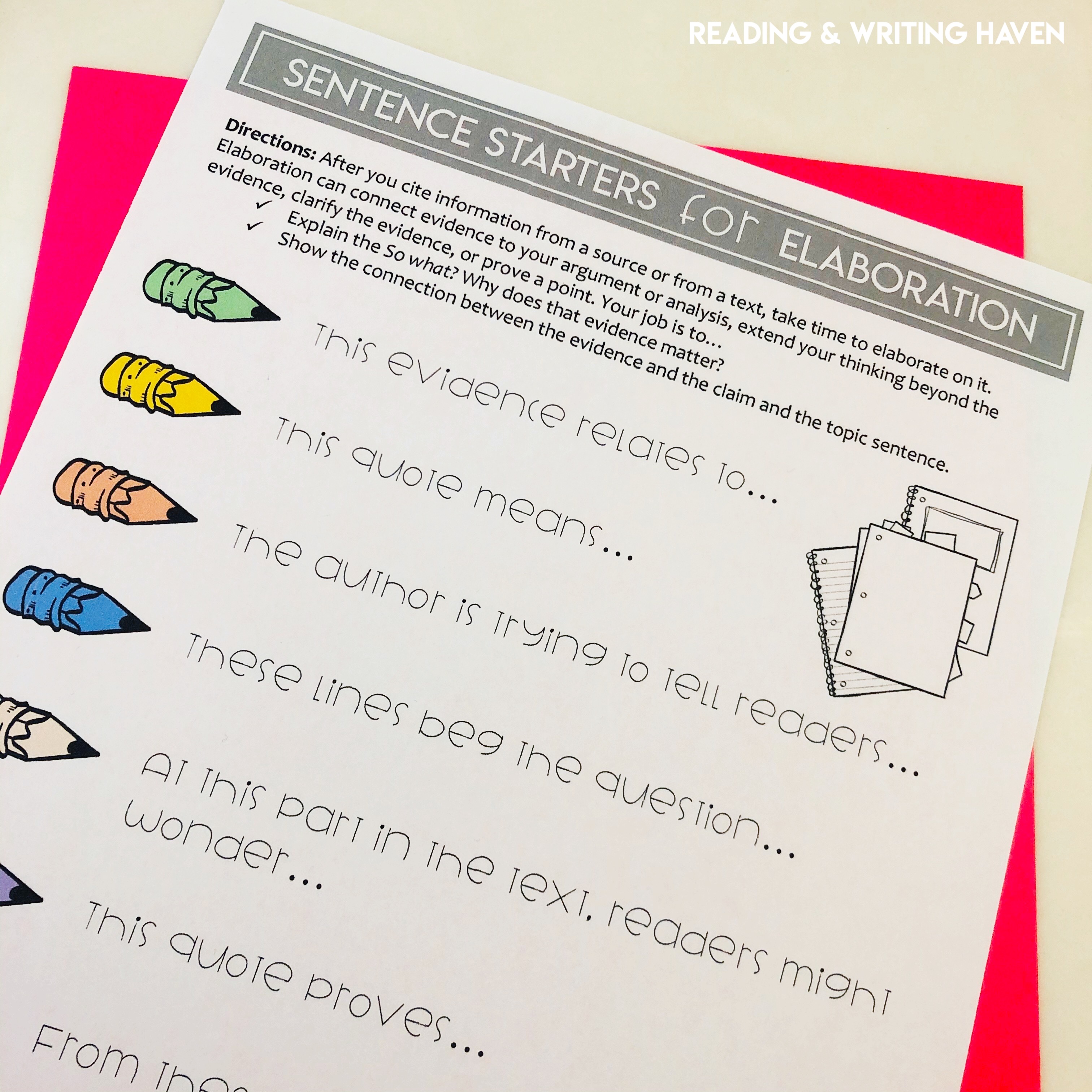
- This line proves…
- This scene illustrates…
- From this evidence, readers can infer…
- At this point, the author is trying to tell readers…
- This situation is similar to…
- In other words…
You can snag a free reference list of sentence starters for elaboration in writing from my resource library .
When it comes to teach elaboration in writing, I think we are missing a step. Instead of jumping straight from a mini lesson to independent practice, we can use scaffolds like the ones mentioned above to support skill development. After all, elaboration is not easy. It’s truly where thinking lives.
Hopefully these tips will help to build your students’ writing skills gradually. Selecting text evidence and elaborating on it can be frustrating for both teacher and student. Slowing down and providing meaningful feedback that focuses on revision is key. Make sure that students hear your feedback and, if they are willing, revise to learn from it.
Looking for more tips for teaching writing? These related articles might help.
MODELING WRITING
RESPONDING TO STUDENT WRITING
ACRONYMS FOR ARGUMENTATIVE WRITING
SCAFFOLDING THE MULTIPLE-PARAGRAPH ESSAY
THE BIG LIST OF WAYS TO MOTIVATE STRUGGLING WRITERS
RELATED RESOURCE:
Use this scaffolded resource, specifically designed for argumentative research writing, to help students elaborate on text evidence or source material meaningfully. Find it here .
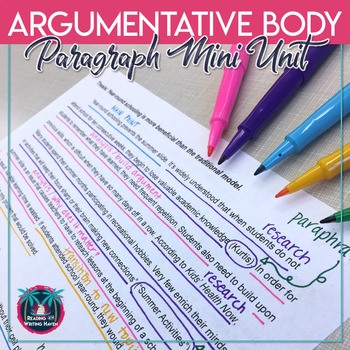
Get the latest in your inbox!
Out & Back

Elaboration: Anatomy of an Essay
On eula biss's "goodbye to all that".

Robert Graves fought in the trenches of the First World War, after which he wrote a memoir called Goodbye to All That in 1929. Later, Joan Didion wrote an essay called “Goodbye to All That” about her experiences as a young woman working at Vogue in New York, consciously referencing Graves’s memoir. And finally Eula Biss wrote an essay called “Goodbye to All That,” consciously referencing Didion’s essay (and Graves’s memoir). This kind of thematic and structural reference in the composition of a new work is what one might call a shadow text. It’s a device of elaboration, a way of composing that makes a text more complexly interesting to the reader. When you have a series of three works like this, you can start speaking about a recession of reference (and in my lecture linked below, I read a passage from a student’s work based on Biss’s essay, for a series of four linked works).
You might look back at my first newsletter about techniques of elaboration here to remind yourselves what I mean by elaboration and how it works as a compositional strategy in writing. Here’s a brief extract, if you don’t want to bother looking up the original.
Elaboration is my word for a bundle of techniques and processes for expanding, filling out, detailing, and concretizing a given subject, passage, sentence, clause or phrase (you could also add making the topic entertaining and interesting to the reader). The rhetorical term for this is AMPLIFICATION, which you can look up. You can think of them as techniques for working upon a given subject, manipulating it and adding information by using forms, by formal means. In this view, all techniques are techniques of elaboration, ways of creating opportunities (I call it aesthetic space) for inventing new material, perspectives, patterns, and meanings. In other words, technique is not just something one learns for the sake of learning it. Technique is a mode invention (elaboration) in itself. It creates content.
Eula Biss writes beautiful essays. She is one of those new young writers riding a boomlet in essay writing, a tidal wave of intricate, dazzling nonfiction that has perhaps got something to do with the late 20th century proliferation of creative writing schools or, on a deeper level, an epochal yearning for solitude and the grace of good craftsmanship. Essays are intricate miniatures; they are often more about their own form than their presumed subject matter. Essay writers are like figure skaters carving their arabesques and curlicues on the ice, focused on the pursuit of form, alone on the frozen page.
The first thing you notice about a good essay is that it doesn’t just deliver the message, tell a story, or convey the facts. An essay’s allure depends on its rhythmic structures, its elaborations of theme, and its density of internal and external resonance, those rhymes, echoes and textual recollections (recognitions) that create a fizzy sense of activity, circulation, ebullience, life itself. But an essay is protean, too. It’s formal without being a single form, a basket of forms. To understand an essay well you need to read a lot of essays, proceed by induction, collect a tool kit of devices, an app directory, useful for reading as much if not more so than for writing.
Biss's essay "Goodbye to All That" is an essay about a young woman, Eula Biss, living in New York for three years. It's a female adventure story, the portrait of an artist as an office temp (among other things), full of dreams, encountering Gotham for the first time. It's also about the nature of narrative. It's an essay about the passage of time, about our habit of telling stories to explain what happened to us and how we changed. Living in New York for three years and then an essay about telling stories — already you have two things going on. Add to that the shadow texts (Didion and Graves) adumbrated in the title, and you have a structure of three simultaneously developing elements that form the basis of the essay.
You can follow the link below to listen to my lecture. You can also download my lecture outline (.docx) and an annotated pdf of the Biss essay. You’ll need a pdf reader to access the annotations.
The lecture is dense, fast paced, and full of quoted examples of devices and techniques. You’ll probably need to listen more than once, read the essays by Biss and Didion, and study my outline and annotated pdf. Besides shadow texts (and the rewriting of shadow text), I discuss the technique of authorial branding, chronology vs anachrony, then/now constructions, theme (and how to develop one), forcing, word patterning and branch patterns, aphorisms, lists and series, anaphora and parallel construction, dissonance and denial of expectation, and pre-stories.
Lecture and audio player here.
My annotated lecture outline & annotated copy of “Goodbye to All That.”
Ready for more?
Module 2: Reading
Text: support and elaboration.
Support and elaboration consist of the specific details and information writers use to develop their topics. The key to developing support and elaboration is getting specific . Good writers use concrete, specific details, and relevant information to construct mental images for their readers. Without this attention to detail, readers struggle to picture what the writer is talking about, and will often give up altogether.
Two important concepts in support and elaboration are sufficiency and relatedness .
Sufficiency refers to the amount of detail — is there enough detail to support the topic? Good writers supply their readers with sufficient details to comprehend what they have written. In narrative writing, this means providing enough descriptive details for the readers to construct a picture of the story in their minds. In essay writing, this means the author finds enough information to support a thesis, and also finding information that is credible and accurate.
Sufficiency, however, is not enough. The power of information is determined less by the quantity of details than by their quality .
Relatedness refers to the quality of the details and their relevance to the topic. Good writers select only the details that will support their focus, deleting irrelevant information. In narrative writing, details should be concrete: they contribute to, rather than detract from, the picture provided by the narrative. In essay writing, information should be relevant to the writer’s goal and strengthen the writer’s ability to meet that goal.

Show, don’t tell: support and elaboration in narrative writing
Many writers work under the advice to “Show, don’t tell.” Good writers help their readers imagine the story by describing the action, providing sensory descriptions, and explaining characters’ thoughts and feelings. Poets are especially adept at using precise details to focus on specific, concrete, observable things or experiences.
Some ways that writers “show, don’t tell” include the following:
- Description of action. Just as slow-motion replay helps television viewers understand the action in a sporting event, good writers can slow down a moment, breaking down an event into a moment-by-moment replay of the action.
- Description of physical states. Good writers use sensory details to show readers what things in their story look like, sound like, smell like, taste like, and feel like. Similes and metaphors can also help readers construct a picture by comparing the object being described to something they know well.
- Descriptions of internal states. Books have an advantage over movies because they let the reader inside the characters’ thoughts and feelings. Good writers also use dialogue to reveal a character’s personality, internal thoughts, and feelings and to provide background information about the story.
Finding the right information: support and elaboration in expository writing
Information is the key to developing support and elaboration in the expository (essay) genres — informational, critical, and argumentative writing. While writers of narratives can often rely solely on their own observations and inner resources to develop their writing, writers of expository genres have to look outside themselves for the information they need to develop their writing. As a result, in expository writing, authors need the ability to find and use relevant information: facts, statistics, examples, and anecdotes. Research, evaluation, and notetaking skills are vital for expository writers.
Contribute!
Improve this page Learn More
- Revision and Adaptation. Provided by : Lumen Learning. Located at : http://lumenlearning.com/ . License : CC BY-NC-SA: Attribution-NonCommercial-ShareAlike
- Support and elaboration. Authored by : Kathleen Cali. Provided by : Learn NC. Located at : http://www.learnnc.org/lp/editions/few/685 . License : CC BY-NC-SA: Attribution-NonCommercial-ShareAlike
- Image of car. Authored by : Susanna Fratarcangeli. Located at : https://flic.kr/p/4hgBJV . License : CC BY-NC: Attribution-NonCommercial


What is Simple Strategy Details to Teach Elaboration in Writing
Introduction.
Elaboration in writing is a key skill that helps students add details and enhance the quality of their work. Whether it’s through the use of examples, descriptions, or text evidence, elaboration allows students to expand their thoughts and create more engaging content. Teachers can use various strategies for teaching elaboration, including the use of anchor charts, peer reviews, and sentence starters. By focusing on helping students to elaborate, they can better understand how to organize their ideas and make connections between different parts of their essays.
Students often struggle with elaboration, especially when faced with nonfiction or argumentative writing. To address this, educators need to provide writing resources, such as graphic organizers and mentor texts, that help students brainstorm and practice their elaboration skills. Understanding the different types of elaboration, such as adding textual evidence or using descriptive language, can guide students in improving their writing process. Through these strategies, students will be better equipped to produce clear and well-developed writing.
Key Takeaways
Teaching elaboration in writing helps students add more details and improve the clarity and engagement of their work.
Anchor charts and sentence starters are effective tools to teach students how to organize and expand their writing with more details.
Modeling the writing process allows students to see how professionals elaborate, providing them with real examples to follow.
Peer reviews and graphic organizers help students identify areas to elaborate on, making their writing stronger and more detailed.
Argumentative and informational writing benefit from using text evidence and descriptions to support claims and explain complex topics.
Mentor texts and detailed descriptions teach students how to use evidence and paint clearer pictures in their writing, leading to better overall results.
Effective Strategies to Teach Elaboration in Writing

When it comes to teaching elaboration in writing, using clear strategies is key. Elaboration helps students add details and make their writing more engaging. Teachers can introduce elaboration strategies during writing units to help students understand how to expand their sentences and paragraphs. This process involves focusing on adding more details, making connections, and using examples to support the main idea. By organizing thoughts and using charts or models, students can better grasp the writing process and learn to elaborate effectively. Whether it’s informational or creative writing, teaching these skills early on helps students write more clearly and confidently.
Practical Strategies for Teaching Elaboration in Writing
1. Use Anchor Charts for Visual Guidance Anchor charts provide a visual reference for students, showing them key steps in the elaboration process. These charts often include sentence starters, examples of expanded sentences, and strategies for adding details to their writing. When students struggle with organizing their thoughts, anchor charts give them a clear path to follow, making the writing process less overwhelming.
2. Model Elaboration Using Mentor Texts When teachers model the writing process by using mentor texts , students can see real examples of how to elaborate effectively. Whether it’s breaking down complex sentences or expanding on a main idea, mentor texts show students how to add descriptive details or use text evidence to strengthen their writing. By reviewing these examples, students understand how professionals elaborate, making it easier to apply similar techniques.
3. Encourage Peer Review and Feedback Peer review allows students to provide feedback on each other’s writing, helping them identify areas where more elaboration is needed. When students review each other’s work, they can spot where details are lacking or where ideas need further expansion. This collaborative process helps students understand the importance of adding text evidence and using descriptive language to make their writing more complete.
4. Use Graphic Organizers to Plan Writing Graphic organizers are another helpful tool for students to visually organize their thoughts before writing. These organizers help students map out their ideas and see where they can add more details or explanations. By using a clear structure, students can focus on elaborating at the right points in their essays, ensuring their writing is thorough and well-developed.
5. Introduce Sentence Starters for Better Elaboration Sentence starters give students a solid foundation to build on when expanding their sentences. These starters help guide students toward adding more details to their writing, whether they’re working on informational or creative pieces. Regular use of sentence starters encourages students to think critically about how they can elaborate on their ideas, leading to stronger, more descriptive writing.
Using Anchor Charts to Teach Elaboration
Anchor charts are a great way to visually introduce students to elaboration strategies. These charts help students understand how to organize their writing and add more details effectively. By focusing on sentence starters, students can learn how to expand their paragraphs and improve their essays. Teachers can use these charts as a reference throughout the writing process, making it easier for students to remember key elaboration techniques. Whether it’s in small groups or independent practice, anchor charts are a valuable resource for helping students develop strong writing skills.
Modeling the Writing Process to Help Students Elaborate
One of the best ways to teach elaboration in writing is through modeling. By walking students through the process, teachers can show them how to add details and expand their thoughts. Using examples from mentor texts or personal writing helps students see how professionals elaborate in their work. This strategy gives students a clear understanding of how to take a simple idea and turn it into a well-developed paragraph. Teachers can also encourage peer modeling, where students learn from each other by reviewing and revising their work together.

Helping Students to Elaborate: Adding Details to Their Writing

Students often struggle with adding enough details to their writing. To teach elaboration, teachers can use anchor charts, examples, and peer revisions. Encouraging students to elaborate in their paragraphs helps build stronger essays and narratives. Teaching strategies like focusing on the main idea and supporting it with evidence makes it easier for students to identify where to add more details. This type of instruction not only improves writing but also helps students organize their thoughts more clearly. Peer reviews and modeling are great ways to get students more involved in the process, making them aware of the importance of elaboration in writing.
Case Study: Peer Review for Better Elaboration
At a middle school in California, teachers introduced peer review sessions to help students improve their elaboration skills. The process involved small groups reviewing each other’s writing, focusing on adding details and expanding main ideas . Teachers provided specific prompts to guide the reviews, making sure students knew where to add evidence or descriptions. After several weeks, students showed noticeable improvement in their ability to elaborate, creating stronger essays and narratives. This strategy not only helped students identify areas where they needed more clarity but also built critical thinking skills through collaborative feedback.
Peer Review as a Tool for Teaching Elaboration
Peer review is a powerful tool for helping students elaborate in their writing. By reviewing each other’s work, students learn to identify areas where more details or clarification are needed. Teachers can guide students through this process by providing specific questions or prompts to consider during the review. This strategy helps students develop a deeper understanding of how to improve their writing while also building critical thinking skills. Peer review sessions can be done in small groups or pairs, providing an interactive way for students to enhance their elaboration techniques.
Using Sentence Starters to Encourage Elaboration
Sentence starters are an effective way to get students to add more details to their writing. These prompts encourage students to elaborate by giving them a framework to begin their sentences. Teachers can provide sentence starters that focus on expanding a main idea, supporting a topic sentence, or adding descriptive details. This strategy helps students organize their thoughts and write more cohesively. Sentence starters can be especially helpful for students who struggle with knowing how to begin elaborating on their ideas. Regular practice with this tool can lead to stronger, more detailed writing.
Identifying and Modeling Elaboration Strategies for Different Types of Writing
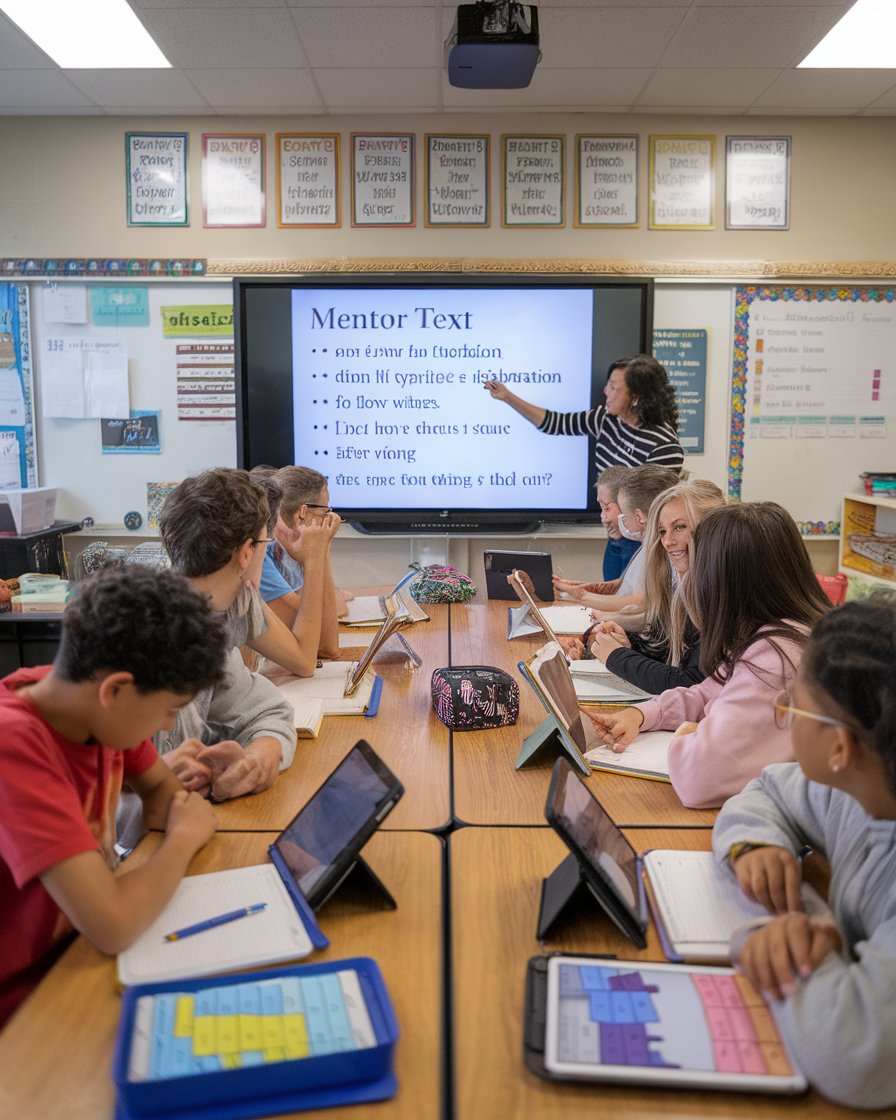
Elaboration strategies vary depending on the type of writing students are working on. Whether it’s argumentative or informational writing, it’s important to teach students how to elaborate using different techniques. Teachers can model strategies like adding text evidence, expanding on a topic sentence, or using descriptive language. These approaches help students identify where they can improve and add details. By practicing in small groups or independently, students gain a better understanding of how to elaborate in writing, leading to stronger essays. Teachers should provide resources and time for students to practice these strategies regularly.
Strategies for Elaboration in Argumentative Writing
Elaboration in argumentative writing requires students to back up their claims with strong evidence. Teachers can guide students on how to use text evidence to support their arguments, as well as expand on their points with clear examples. Providing students with a graphic organizer can help them structure their thoughts and identify areas where elaboration is needed. Practicing these strategies helps students develop more persuasive essays. Argumentative writing is a critical skill in many academic settings, so focusing on elaboration techniques in this genre is important for student success.
Elaboration Techniques for Informational Writing
When it comes to informational writing, elaboration involves explaining ideas in detail and providing factual information. Teachers can model how to break down complex topics into smaller parts, making it easier for students to elaborate on their writing. Students can use these techniques to add more clarity and depth to their essays. Encouraging the use of mentor texts is a great way for students to see how professionals elaborate in informational writing. With regular practice, students will learn how to present information in a clear, detailed way.
“Writing improves in direct ratio to the number of things we can keep out of it.” – William Zinsser (From On Writing Well )
Focusing on Text Evidence and Description to Encourage Students to Elaborate in Writing
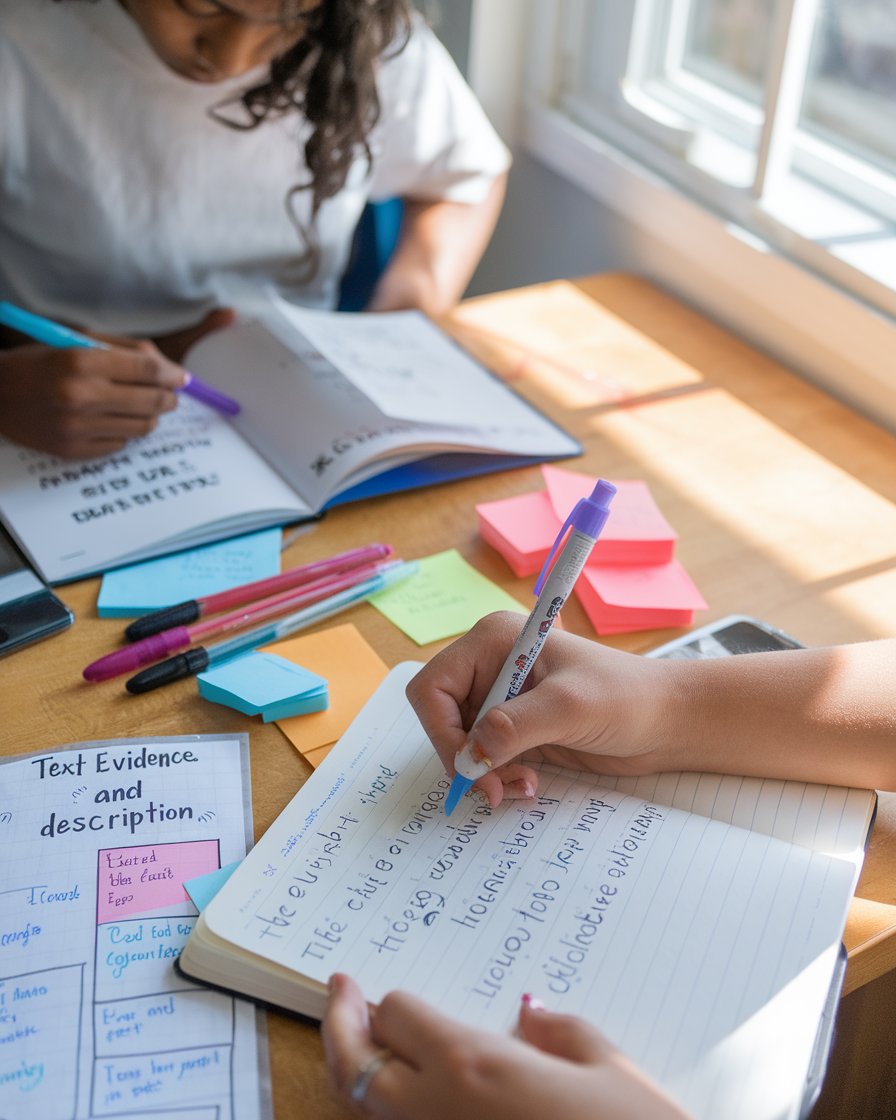
One effective way to encourage students to elaborate is by focusing on text evidence and detailed descriptions. Teaching students how to use evidence to support their points helps them develop stronger essays. Additionally, using descriptive language in their writing allows them to paint clearer pictures for their readers. Teachers can focus on helping students identify areas where they can add details and improve the overall quality of their writing. Encouraging the use of color coding, graphic organizers, and sentence starters also makes the process of elaboration easier for students to follow. This helps them become more confident writers.
Using Mentor Texts to Teach Text Evidence and Description
Mentor texts are an excellent resource for teaching students how to use text evidence and description to elaborate in their writing. By studying how authors support their ideas and use descriptive language, students gain a better understanding of how to enhance their own work. Teachers can guide students through close reading exercises that highlight these techniques. This strategy helps students learn how to use textual evidence to support their arguments and add depth to their writing. Providing students with a variety of mentor texts helps them see elaboration in different writing styles and genres .
Encouraging the Use of Graphic Organizers for Elaboration
Graphic organizers are a valuable tool for helping students elaborate on their writing. These organizers allow students to visually map out their ideas and see where they can add more details. Teachers can introduce different types of organizers based on the writing task, such as webs, charts, or timelines. This strategy helps students focus on the key elements of their writing and ensure they provide enough supporting details. Graphic organizers are especially helpful for students who need extra guidance in organizing their thoughts and elaborating on their work.
- (Business Series)
- ASIN : B06X99RDBK
- Print length : 176 pages
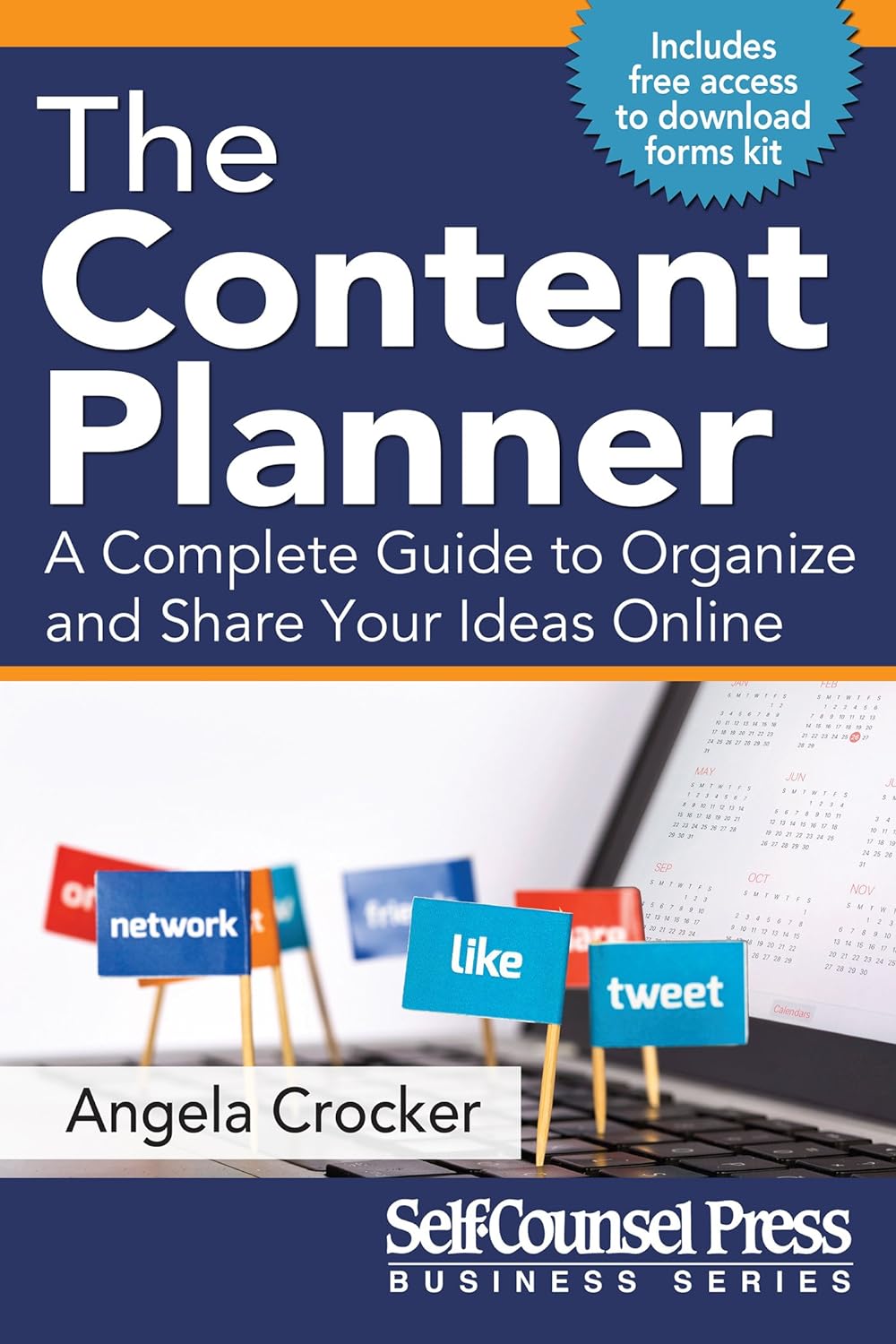
In wrapping things up, teaching elaboration in writing is a must-have skill for students to really improve their writing. It’s not just about writing more but adding the right details to make their work clear and engaging. Using strategies like anchor charts, sentence starters, and even peer reviews, teachers can show students how to elaborate their ideas. These tools help students figure out how to organize their thoughts and really focus on adding those extra important details.
Plus, using mentor texts and graphic organizers gives students something they can easily follow. These help students who might be struggling with elaboration, especially when they’re doing nonfiction or argumentative writing. Teaching students to use things like text evidence or descriptive language helps them build stronger responses. When teachers focus on these simple but effective strategies, students start feeling more confident, and their writing gets much better.

James Dunnington leads the James Dunnington Collection, featuring five unique blogs: a practical Pet Care Guide, an enlightening Ancient History Blog, a resourceful Home Improvement Guide, a cutting-edge Tech Innovation Guide, and a strategic Online Money Making platform. Each site delivers valuable insights designed to empower and inform. For updates and more tips, visit our Contact Us page to sign up for our newsletter, ensuring you never miss out on the latest content from any of these dynamic fields.
Get Weekly Content update right in your mailbox.
Get your FREE copy of Ebook on Keto DIET when you sign up now!
What Are Youtube Traffic Volume Rank Strategy Tripled Keywords
How to generate ideas and strategy looping in writing as a writer.
14601 North Bybee Lake Court, Portland, OR 97203 United States
Phone: 1(503) 415-3470
[email protected]
Look up a word, learn it forever.
Elaboration.
Other forms: elaborations
Elaboration means "adding details." Kids are famous for answering "good" when asked how school was and "nothing" when asked what they did there. If pressed for elaboration , they might talk about recess, lunch, and even what they learned.
Elaboration is the result of going that extra mile, such as when your history teacher asks for five paragraphs on the Fall of Rome, and you write three pages, or when your friend, instead of giving you a regular birthday card, creates a mini-scrapbook with photos and mementos from the past year. As you can see, elaboration takes time and energy because you go into greater detail than usual.
- noun developing in intricate and painstaking detail synonyms: working out see more see less type of: development the act of improving by expanding, enlarging, or refining
- noun addition of extra material or illustration or clarifying detail “an elaboration of the sketch followed” synonyms: amplification see more see less type of: expanding upon , expansion adding information or detail
- noun a discussion that provides additional information synonyms: enlargement , expansion see more see less types: expatiation a discussion (spoken or written) that enlarges on a topic or theme at length or in detail embellishment , embroidery elaboration of an interpretation by the use of decorative (sometimes fictitious) detail type of: discourse , discussion , treatment an extended communication (often interactive) dealing with some particular topic
- noun the result of improving something synonyms: refinement see more see less type of: advance , betterment , improvement a change for the better; progress in development
- noun the quality of being marked by elaborately complex detail synonyms: elaborateness , intricacy , involution see more see less type of: complexity , complexness the quality of being intricate and compounded
Vocabulary lists containing elaboration
Have you got the write stuff? Find out by learning this comprehensive list of words related to writing. You'll review genres of writing, text structure, grammar and parts of speech, stages of the writing process, and much more. From introduction to conclusion, this list has got you covered.
Vocabulary is key to performing well on Common Core-aligned tests for English Language Arts as well as for building literacy in social studies, science, and technical subjects. This collection features common tier-2 words that are taught and tested in Grades 7 and 8. These words are used in a variety of contexts, exhibit different shades of meaning based on those contexts, and appear commonly in classroom instruction and on standardized assessments. Here are links to our lists in the collection: List 1 , List 2 , List 3 , List 4 , List 5 , List 6 , List 7 , List 8
Vocabulary is key to performing well on Common Core-aligned tests for English Language Arts as well as for building literacy in social studies, science, and technical subjects. This collection features common tier-2 words that are taught and tested in Grades 9 and 10. These words are used in a variety of contexts, exhibit different shades of meaning based on those contexts, and appear commonly in classroom instruction and on standardized assessments. Here are links to our lists for the collection: List 1 , List 2 , List 3 , List 4 , List 5 , List 6 , List 7 , List 8
Sign up now (it’s free!)
Whether you’re a teacher or a learner, vocabulary.com can put you or your class on the path to systematic vocabulary improvement..

- teaching writing
Practical Strategies for Teaching Elaboration and Adding Detail in Writing
Teaching elaboration is a very difficult skill for students when writing constructed responses. Learn different elaboration strategies for getting students to add more details with writing examples here.
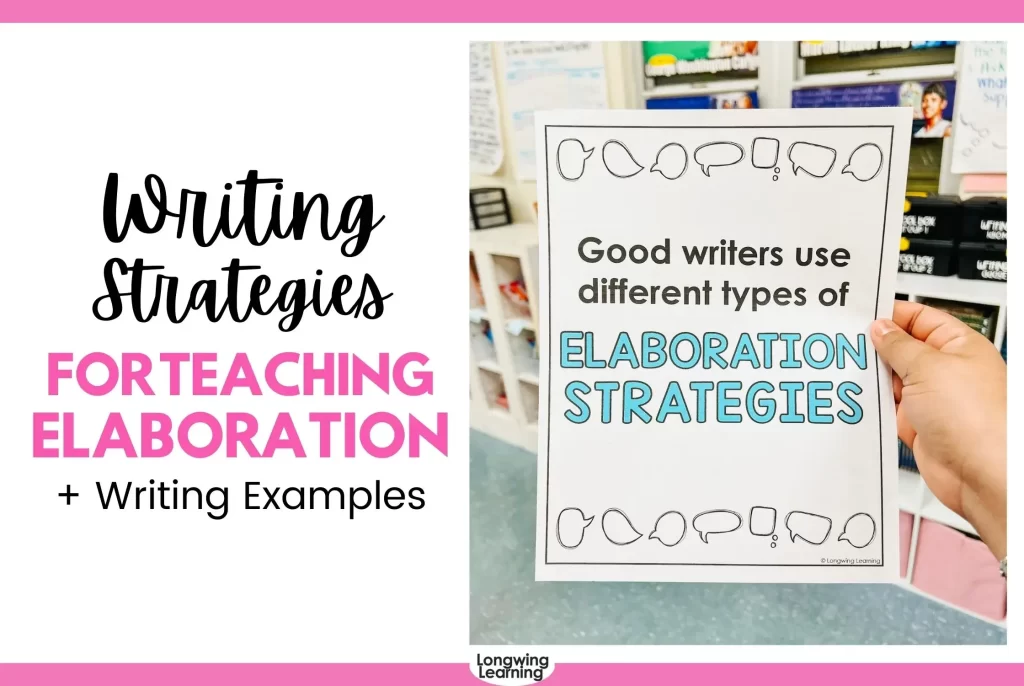
It's a common issue for 4th or 5th-grade students to need help elaborating on their evidence when writing argumentative or informational essays.
Many young writers new to text-based writing often rephrase the textual evidence as part of their explanation.
Even when trying elaboration stems or sentence starters, they need help adding more information to explain their point when writing paragraphs.
If you've ever wondered how to help those struggling students elaborate by adding more details to their writing, you're in the right place.
Read along to find practical examples beyond rephrasing, and discover how to guide your students in effortlessly adding rich details.
Table of Contents
How Do You Teach Students to Elaborate in Writing?
Explain what elaboration is, and provide clear examples of how it appears when writing paragraphs. Take them through each type of elaboration strategy so they can use it in their writing.
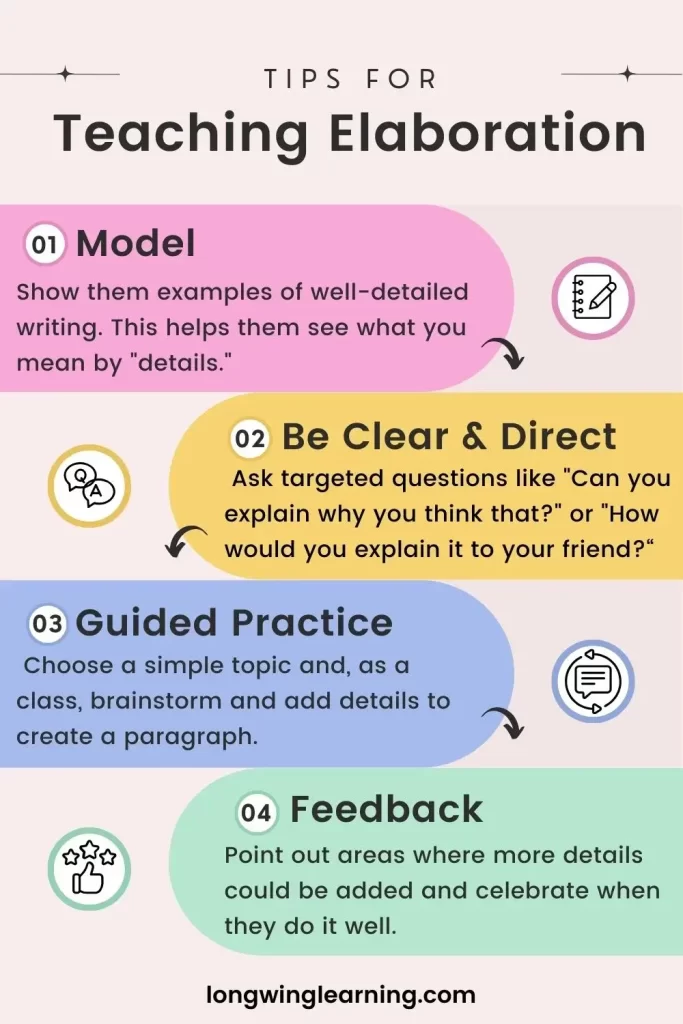
When you tell students to elaborate, ask specific questions; don't just say, “Elaborate on this paragraph.” They might need help understanding what that means.
Instead, be clear and direct. The word “elaborate” might be unfamiliar.
What we want them to do is explain their ideas, make it clear how their writing connects to the main topic, or describe their thoughts in more detail.
For your students to explain their ideas using their own words, you must explicitly teach them how to elaborate in writing or expand on their ideas through continuous modeling, repetition, and independent practice.
Elaboration for Different Types of Writing
Elaboration comes in different forms. How your students elaborate depends on the type of writing they're working on.
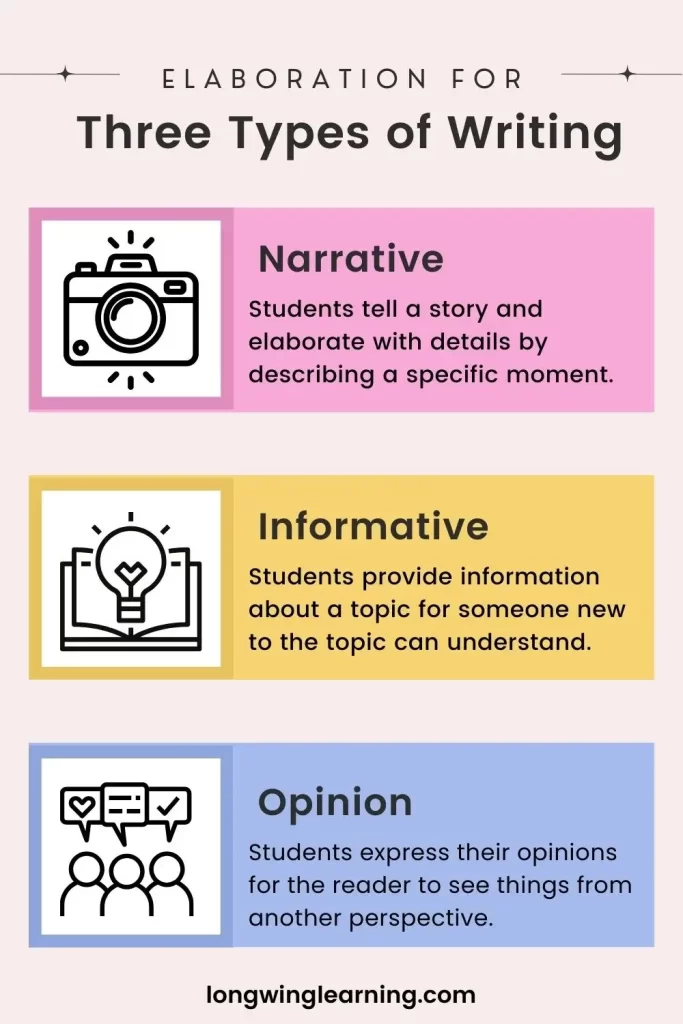
Different types of writing require different approaches to adding details and expanding on those ideas.
In fourth grade and fifth grade, students often have to write about three main types of writing: narrative, argumentative, and informational.
Here is how elaboration will be different for each type of writing.
- Narrative Essay – Students tell a story and elaborate with details by describing a specific moment. The goal is to help readers picture the scene and feel like they're in the story.
- Informational or Expository Essay- Students teach the reader about a topic in this type of writing. They add more details by explaining concepts in a way that someone new to the topic can easily understand.
- Argumentative or Opinion Essay- Students pick a side and share their thoughts. Elaborating in an argumentative essay means adding details to strengthen their point and convince the reader. It's not just about expressing their opinion but getting others to see things differently.
Teaching Elaboration Strategies with Examples
An anecdote is a story. It can be elaborate or brief. Including an anecdote within a paragraph should be based on an experience that happened.
Explain to your students the purpose of an anecdote is to make a text-to-self connection by telling a story.
There are two common misconceptions among students when it comes to writing anecdotes.
First, a story is long and includes tons of descriptive writing.
Second, their anecdotes have to include every detail that happened that day.
For an anecdote to be compelling, it must be short and straight to the point.
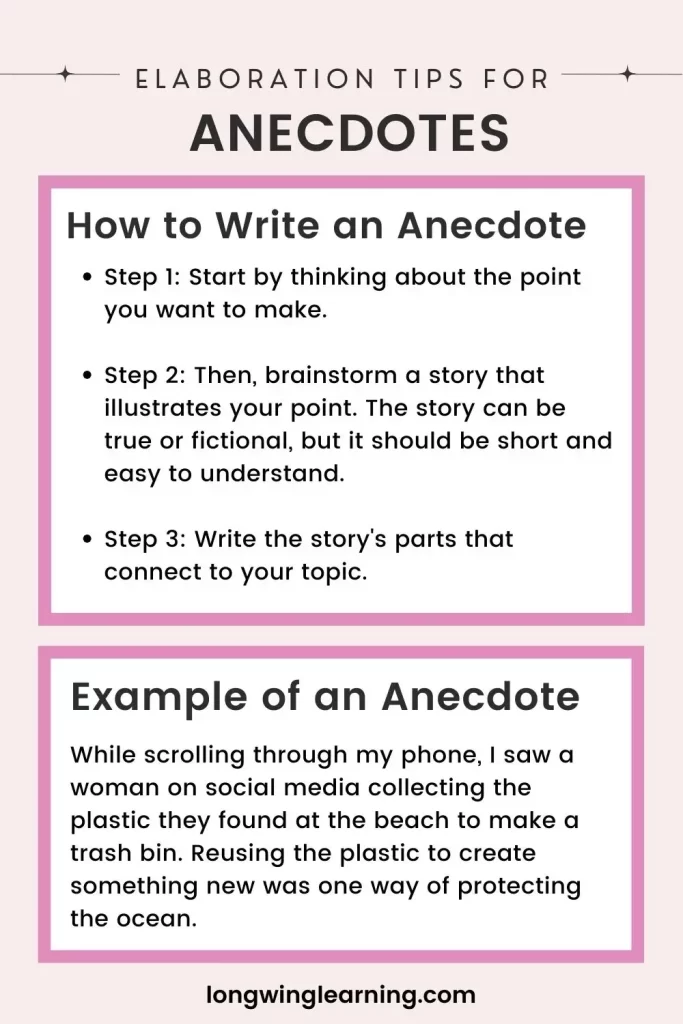
Here are three steps to show your students how to write an anecdote:
- Step 1: Start by thinking about the point you want to make.
- Step 2: Then, brainstorm a story that illustrates your point. The story can be true or fictional, but it should be short and easy to understand.
- Step 3: Write the story's parts that connect to your topic.
Here is an example of an anecdote:
- Text to self-connection: “While scrolling through my phone, I saw a woman on social media collecting the plastic they found at the beach to make a trash bin. Reusing the plastic to create something new was one way of protecting the ocean.”
Examples
Examples give information about a topic. It is one of the writing strategies many students will be familiar with when writing.
Still, examples in writing become powerful when your students can explain how they relate to the point they are trying to make.
Your students can use examples to clarify a point, explain an issue, or justify a point.
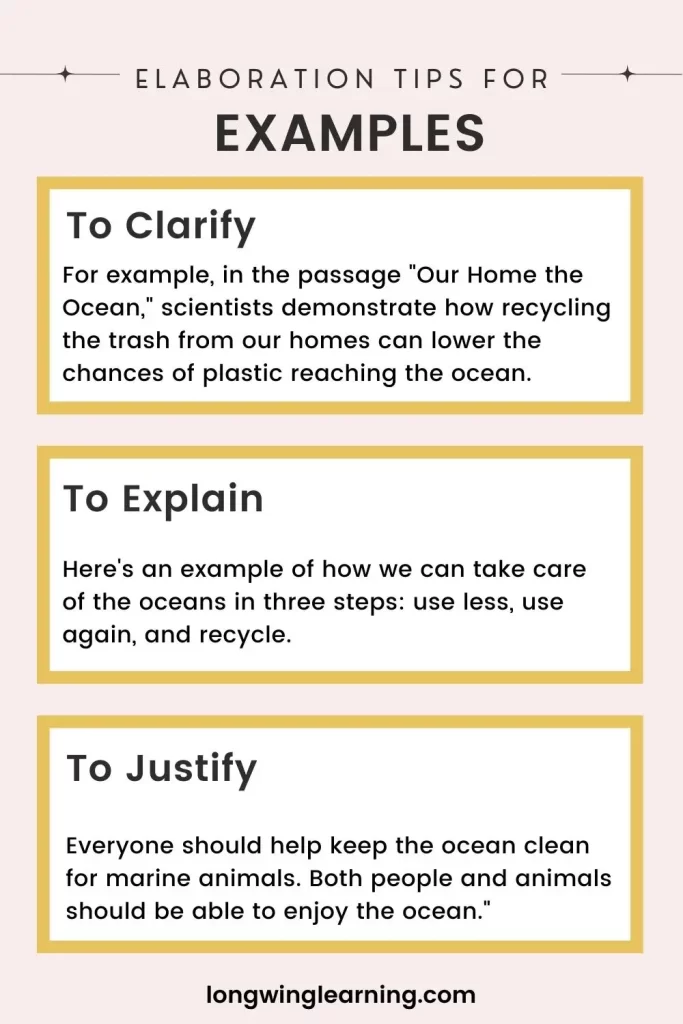
Here are some examples of different ways to add them to their writing:
- To clarify, “For example, in the passage “Our Home the Ocean,” scientists demonstrate how recycling the trash from our homes can lower the chances of plastic reaching the ocean.”
- To explain: “Here's an example of how we can take care of the oceans in three steps: use less, use again, and recycle.”
- To justify: “Everyone should help keep the ocean clean for marine animals. Both people and animals should be able to enjoy the ocean.”
Definitions
A definition in writing is to explain the meaning of concepts relevant to the topic. If your students write an informative and argumentative essay, adding a definition of the topic is a great way to elaborate.
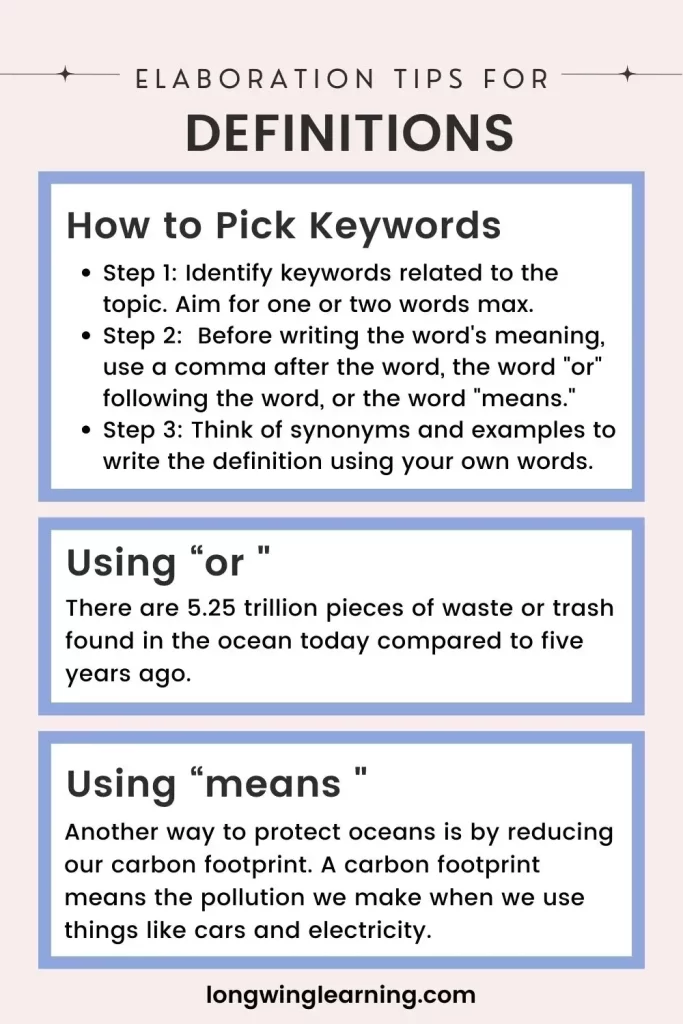
A common error students make is defining long or new words to them. To avoid your students making this mistake, here are three steps to show them how to pick keywords:
Step 1: Identify keywords related to the topic. Aim for one or two words max.
Step 2: Before writing the word's meaning, use a comma after the word, the word “or” following the word, or the word “means.”
Step 3: Think of synonyms and examples to write the definition using your own words.
Here are examples of using definitions to elaborate in writing:
- Using the “or”: “There are 5.25 trillion pieces of waste or trash found in the ocean today compared to five years ago.”
- Using the signal word “this means “: “Another way to protect oceans is by reducing our carbon footprint. A carbon footprint means the pollution we make when we use things like cars and electricity.”
Facts & Stats
Facts and statistics form a combination that we can split into two parts.
Facts tell us things we already know or factual statements.
Statistics involve numbers like percentages.
Tell students that adding a fact or statistic makes their statements more believable and helpful because people can check the information.
As a result, it strengthens their writing.
An error teachers make is telling students to make up information for the sake of including a fact or statistic.
Instead, show kids to look for factual information in what they are reading and restate it using their words.
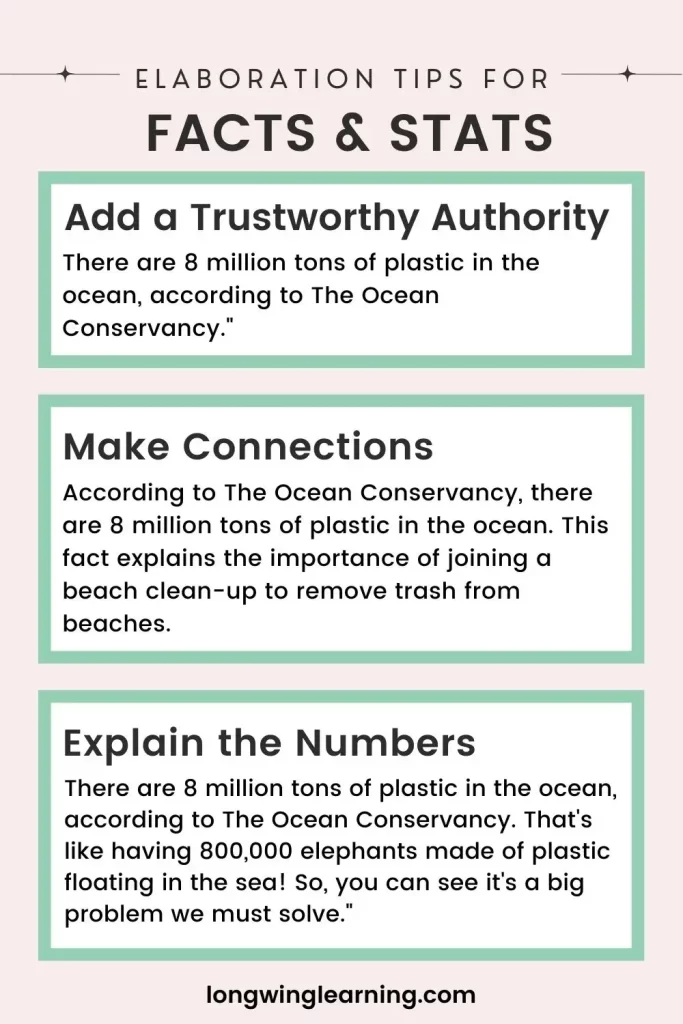
Here are four tips to show your students how to include facts or stats in their writing:
- The fact must clearly relate to the topic.
- Tell where the fact or statistic is coming from.
- Explain how it is relevant to their topic.
- If you're using a number or percentage, explain what it means.
Here are three examples to show your students the power of facts and statistics in their writing:
Adding a trustworthy authority: “There are 8 million tons of plastic in the ocean, according to The Ocean Conservancy.”
Making connections: “According to The Ocean Conservancy, there are 8 million tons of plastic in the ocean. This fact explains the importance of joining a beach clean-up to remove trash from beaches.”
Explaining the numbers : “There are 8 million tons of plastic in the ocean, according to The Ocean Conservancy. That's like having 800,000 elephants made of plastic floating in the sea! So, you can see it's a big problem we must solve.”
In writing, a quote is copying a sentence word by word from the reading passage.
Including a quote can help explain what the paragraph is about. Quotes also make a point stand out better than rephrasing it in your own words.
It goes hand in hand with students knowing how to back up what they say using information from the reading passage, known as text evidence .
A common problem students encounter is selecting big chunks of text to add as a quote and copying it word by word.
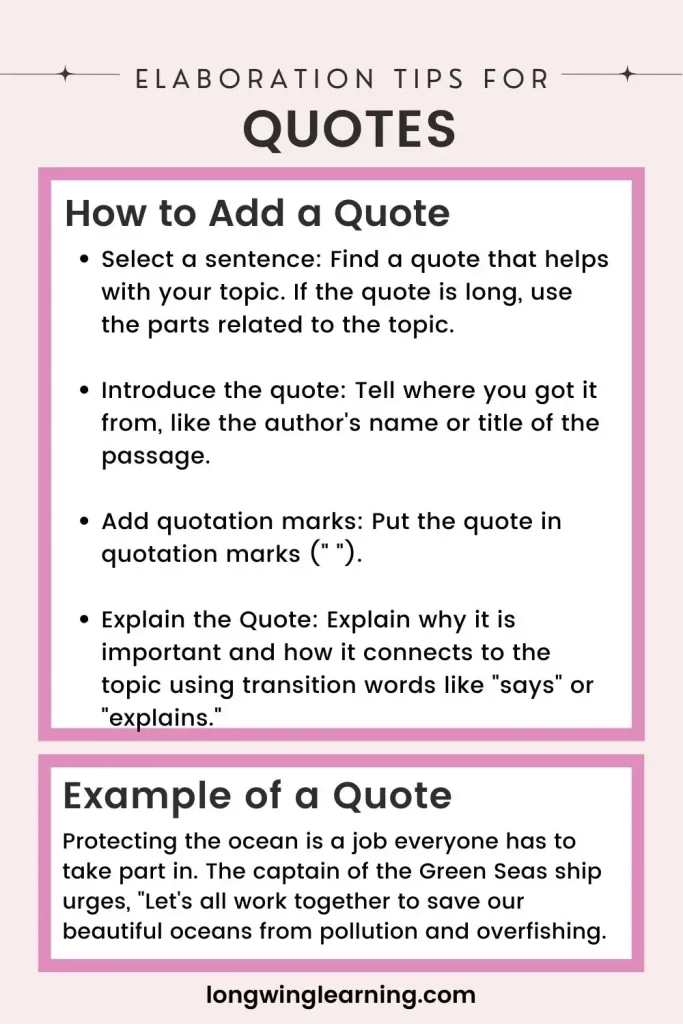
To help them, remind your students to follow these tips on adding a quote within a paragraph.
- Select a sentence: Find a quote that helps with your topic. If the quote is long, use the parts related to the topic.
- Introduce the quote: Tell where you got it from, like the author's name or title of the passage.
- Add quotation marks: Put the quote in quotation marks (“”).
- Explain the Quote: Explain why it is important and how it connects to the topic using transition words like “says” or “explains.”
Here's an example:
- Adding to a quote: “Protecting the ocean is a job everyone has to take part in. The captain of the Green Seas ship urges, “Let's all work together to save our beautiful oceans from pollution and overfishing.”
- Explaining a quote: Dr. Johnson, a marine scientist, explained, “Coastal habitats like mangroves, salt marshes, and coral reefs serve as breeding and feeding grounds for many marine species.” These homes found in the oceans are where ocean animals have babies and find food to survive.
Dialogue
Dialogue is a conversation between two or more people in a written form.
Many students might think that dialogue is only found in stories because stories are a common place to read dialogue.
Instead, writers use dialogue to incorporate expert opinions within a paragraph, strengthening the essay's main idea.
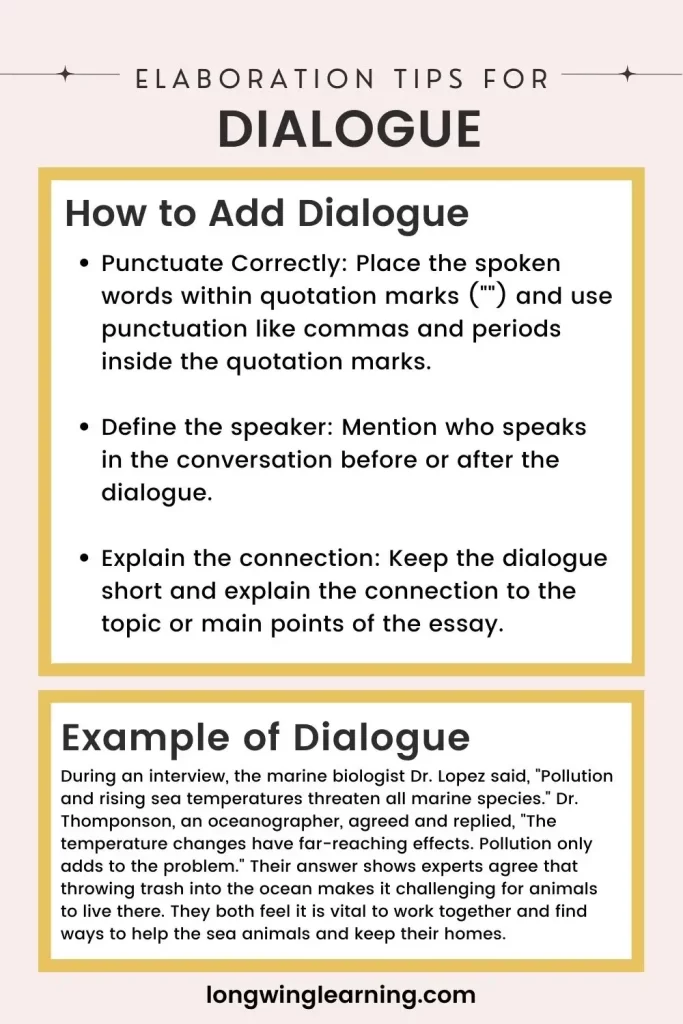
Here are three writing tips to help your students add dialogue effectively in an informative essay:
- Punctuate Correctly: Place the spoken words within quotation marks (“”) and use punctuation like commas and periods inside the quotation marks.
- Define the speaker: Mention who speaks in the conversation before or after the dialogue.
- Explain the connection: Keep the dialogue short and explain the connection to the topic or main points of the essay.
Here's an example to show your students how to use dialogue in an informative paragraph.
- During an interview, the marine biologist Dr. Lopez said, “Pollution and rising sea temperatures threaten all marine species.” Dr. Thomponson, an oceanographer, agreed and replied, “The temperature changes have far-reaching effects. Pollution only adds to the problem.” Their answer shows experts agree that throwing trash into the ocean makes it challenging for animals to live there. They both feel it is vital to work together and find ways to help the sea animals and keep their homes.
In the example above, both experts received credit, and what they said was marked by quotation marks.
The following sentence clarifies why this conversation is significant to the essay's main idea about ocean preservation.
Descriptions
A description helps the reader visualize and understand what the author is talking about using sensory details.
Sensory details include any of the five senses to help readers get a vivid and complete picture in their heads.
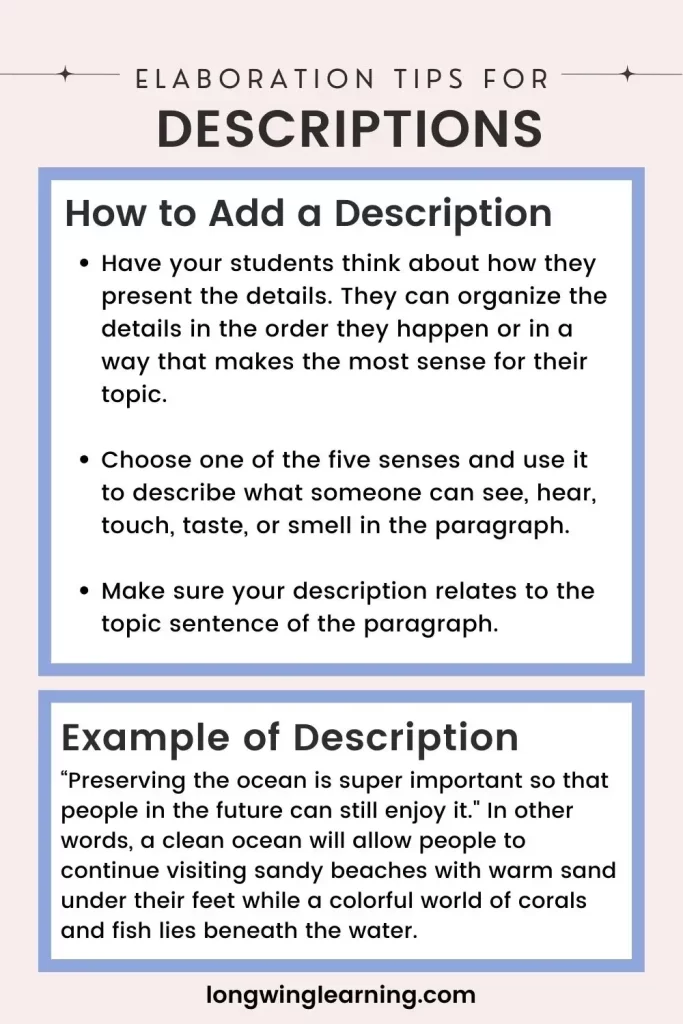
Here are ways to help your students write descriptions in their essays.
- Have your students think about how they present the details. They can organize the details in the order they happen or in a way that makes the most sense for their topic.
- Choose one of the five senses and use it to describe what someone can see, hear, touch, taste, or smell in the paragraph.
- Prompt students to use strong verbs. Make an anchor chart with different words for students to use as a reference.
- Make sure your description relates to the topic sentence of the paragraph. It should help the reader understand the topic better.
Here's an example of a description to show your students:
- “Preserving the ocean is super important so that people in the future can still enjoy it.” In other words, a clean ocean will allow people to continue visiting sandy beaches with warm sand under their feet while a colorful world of corals and fish lies beneath the water.
Teaching elaboration is a writing skill 4th and 5th-grade students benefit from having direct instruction, whether in small groups or as a whole class.
When telling students to elaborate, be specific with what you want them to do.
For many students, “elaboration” might be a word they have heard before but are unfamiliar with the action it requires them to do within their writing.
The type of elaboration techniques students incorporate within their paragraphs depends on the kind of writing they're working on.
Students can use any of the seven elaboration strategies to add more details to their paragraphs.
They can do this by telling a story, giving examples, explaining what something means, adding facts, using a quote, adding dialogue, or describing things using their senses with strong verbs.
Need writing resources to teach elaboration? Explore these helpful writing practice worksheets featuring handy elaboration sentence starters and examples. They're perfect for helping your students review and master various elaboration techniques for writing paragraphs!
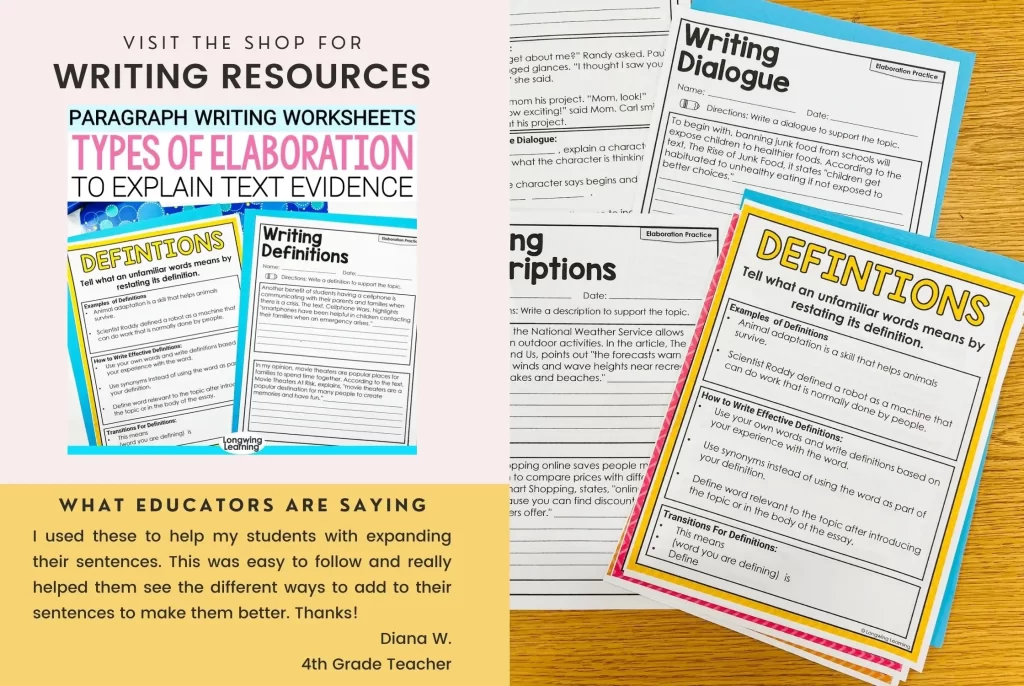
Leave a Comment Cancel Reply
Your email address will not be published. Required fields are marked *
Vanessa I Longwing Learning
You might also enjoy..., create a successful meet the teacher night scavenger hunt.
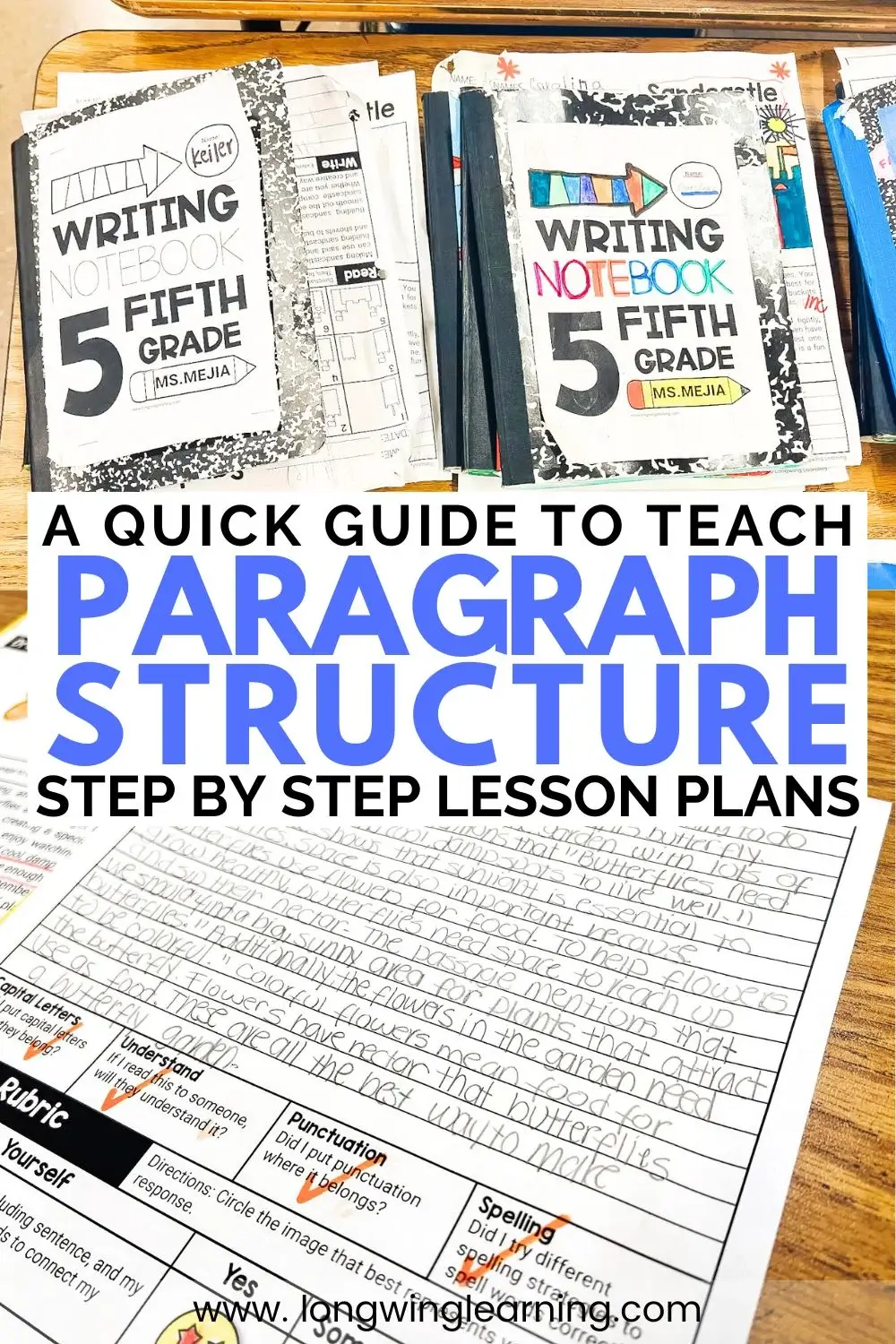
How to Teach Paragraph Writing: From Sentences to Paragraphs in 5 Days
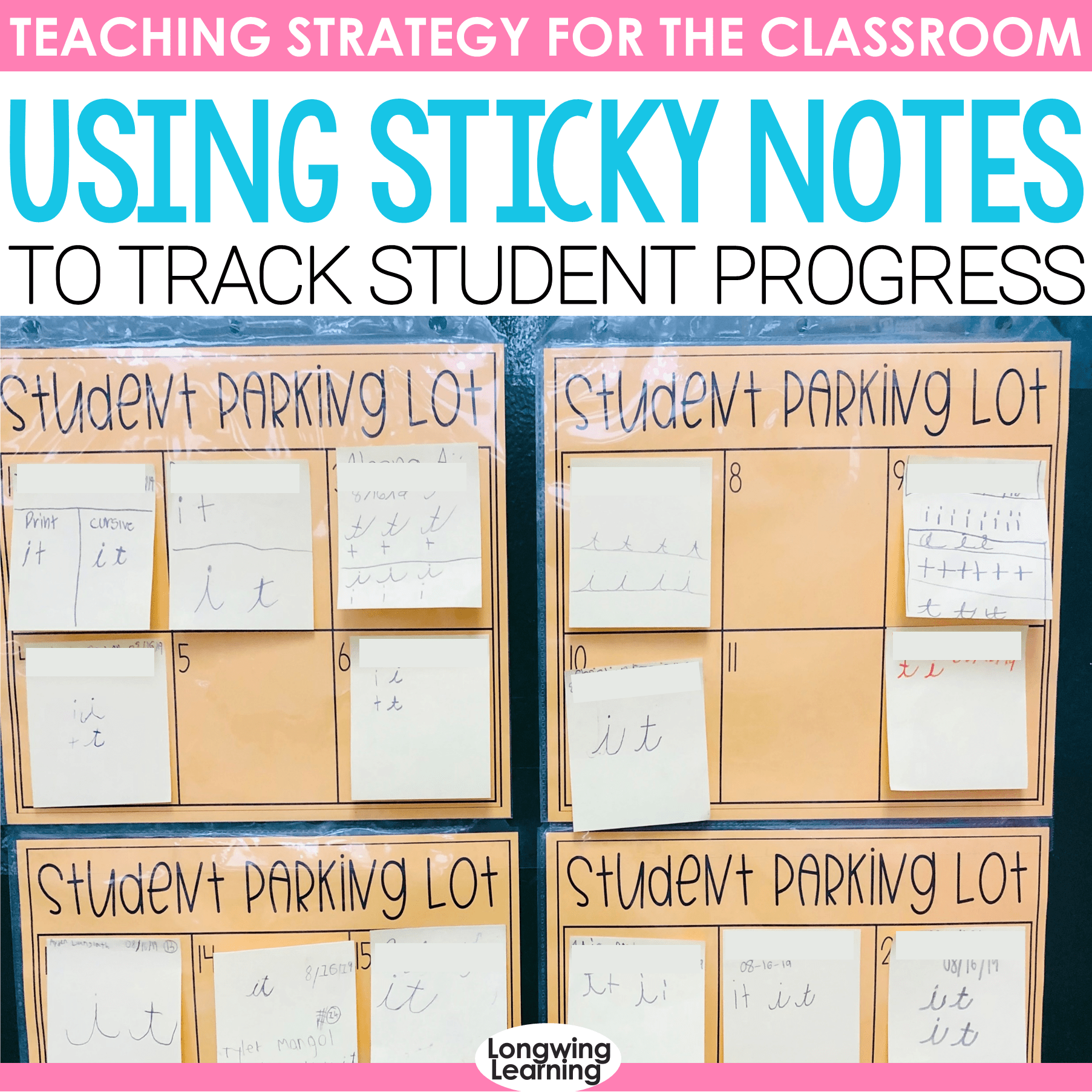
How I Use Post-Its to Track Student Progress with a Student Parking Lot

13 Secrets For Making Beautiful Bulletin Boards
Have a language expert improve your writing
Run a free plagiarism check in 10 minutes, generate accurate citations for free.
- Knowledge Base
- How to write an argumentative essay | Examples & tips
How to Write an Argumentative Essay | Examples & Tips
Published on July 24, 2020 by Jack Caulfield . Revised on July 23, 2023.
An argumentative essay expresses an extended argument for a particular thesis statement . The author takes a clearly defined stance on their subject and builds up an evidence-based case for it.
Instantly correct all language mistakes in your text
Upload your document to correct all your mistakes in minutes

Table of contents
When do you write an argumentative essay, approaches to argumentative essays, introducing your argument, the body: developing your argument, concluding your argument, other interesting articles, frequently asked questions about argumentative essays.
You might be assigned an argumentative essay as a writing exercise in high school or in a composition class. The prompt will often ask you to argue for one of two positions, and may include terms like “argue” or “argument.” It will frequently take the form of a question.
The prompt may also be more open-ended in terms of the possible arguments you could make.
Argumentative writing at college level
At university, the vast majority of essays or papers you write will involve some form of argumentation. For example, both rhetorical analysis and literary analysis essays involve making arguments about texts.
In this context, you won’t necessarily be told to write an argumentative essay—but making an evidence-based argument is an essential goal of most academic writing, and this should be your default approach unless you’re told otherwise.
Examples of argumentative essay prompts
At a university level, all the prompts below imply an argumentative essay as the appropriate response.
Your research should lead you to develop a specific position on the topic. The essay then argues for that position and aims to convince the reader by presenting your evidence, evaluation and analysis.
- Don’t just list all the effects you can think of.
- Do develop a focused argument about the overall effect and why it matters, backed up by evidence from sources.
- Don’t just provide a selection of data on the measures’ effectiveness.
- Do build up your own argument about which kinds of measures have been most or least effective, and why.
- Don’t just analyze a random selection of doppelgänger characters.
- Do form an argument about specific texts, comparing and contrasting how they express their thematic concerns through doppelgänger characters.
Prevent plagiarism. Run a free check.
An argumentative essay should be objective in its approach; your arguments should rely on logic and evidence, not on exaggeration or appeals to emotion.
There are many possible approaches to argumentative essays, but there are two common models that can help you start outlining your arguments: The Toulmin model and the Rogerian model.
Toulmin arguments
The Toulmin model consists of four steps, which may be repeated as many times as necessary for the argument:
- Make a claim
- Provide the grounds (evidence) for the claim
- Explain the warrant (how the grounds support the claim)
- Discuss possible rebuttals to the claim, identifying the limits of the argument and showing that you have considered alternative perspectives
The Toulmin model is a common approach in academic essays. You don’t have to use these specific terms (grounds, warrants, rebuttals), but establishing a clear connection between your claims and the evidence supporting them is crucial in an argumentative essay.
Say you’re making an argument about the effectiveness of workplace anti-discrimination measures. You might:
- Claim that unconscious bias training does not have the desired results, and resources would be better spent on other approaches
- Cite data to support your claim
- Explain how the data indicates that the method is ineffective
- Anticipate objections to your claim based on other data, indicating whether these objections are valid, and if not, why not.
Rogerian arguments
The Rogerian model also consists of four steps you might repeat throughout your essay:
- Discuss what the opposing position gets right and why people might hold this position
- Highlight the problems with this position
- Present your own position , showing how it addresses these problems
- Suggest a possible compromise —what elements of your position would proponents of the opposing position benefit from adopting?
This model builds up a clear picture of both sides of an argument and seeks a compromise. It is particularly useful when people tend to disagree strongly on the issue discussed, allowing you to approach opposing arguments in good faith.
Say you want to argue that the internet has had a positive impact on education. You might:
- Acknowledge that students rely too much on websites like Wikipedia
- Argue that teachers view Wikipedia as more unreliable than it really is
- Suggest that Wikipedia’s system of citations can actually teach students about referencing
- Suggest critical engagement with Wikipedia as a possible assignment for teachers who are skeptical of its usefulness.
You don’t necessarily have to pick one of these models—you may even use elements of both in different parts of your essay—but it’s worth considering them if you struggle to structure your arguments.
Regardless of which approach you take, your essay should always be structured using an introduction , a body , and a conclusion .
Like other academic essays, an argumentative essay begins with an introduction . The introduction serves to capture the reader’s interest, provide background information, present your thesis statement , and (in longer essays) to summarize the structure of the body.
Hover over different parts of the example below to see how a typical introduction works.
The spread of the internet has had a world-changing effect, not least on the world of education. The use of the internet in academic contexts is on the rise, and its role in learning is hotly debated. For many teachers who did not grow up with this technology, its effects seem alarming and potentially harmful. This concern, while understandable, is misguided. The negatives of internet use are outweighed by its critical benefits for students and educators—as a uniquely comprehensive and accessible information source; a means of exposure to and engagement with different perspectives; and a highly flexible learning environment.
The body of an argumentative essay is where you develop your arguments in detail. Here you’ll present evidence, analysis, and reasoning to convince the reader that your thesis statement is true.
In the standard five-paragraph format for short essays, the body takes up three of your five paragraphs. In longer essays, it will be more paragraphs, and might be divided into sections with headings.
Each paragraph covers its own topic, introduced with a topic sentence . Each of these topics must contribute to your overall argument; don’t include irrelevant information.
This example paragraph takes a Rogerian approach: It first acknowledges the merits of the opposing position and then highlights problems with that position.
Hover over different parts of the example to see how a body paragraph is constructed.
A common frustration for teachers is students’ use of Wikipedia as a source in their writing. Its prevalence among students is not exaggerated; a survey found that the vast majority of the students surveyed used Wikipedia (Head & Eisenberg, 2010). An article in The Guardian stresses a common objection to its use: “a reliance on Wikipedia can discourage students from engaging with genuine academic writing” (Coomer, 2013). Teachers are clearly not mistaken in viewing Wikipedia usage as ubiquitous among their students; but the claim that it discourages engagement with academic sources requires further investigation. This point is treated as self-evident by many teachers, but Wikipedia itself explicitly encourages students to look into other sources. Its articles often provide references to academic publications and include warning notes where citations are missing; the site’s own guidelines for research make clear that it should be used as a starting point, emphasizing that users should always “read the references and check whether they really do support what the article says” (“Wikipedia:Researching with Wikipedia,” 2020). Indeed, for many students, Wikipedia is their first encounter with the concepts of citation and referencing. The use of Wikipedia therefore has a positive side that merits deeper consideration than it often receives.
Here's why students love Scribbr's proofreading services
Discover proofreading & editing
An argumentative essay ends with a conclusion that summarizes and reflects on the arguments made in the body.
No new arguments or evidence appear here, but in longer essays you may discuss the strengths and weaknesses of your argument and suggest topics for future research. In all conclusions, you should stress the relevance and importance of your argument.
Hover over the following example to see the typical elements of a conclusion.
The internet has had a major positive impact on the world of education; occasional pitfalls aside, its value is evident in numerous applications. The future of teaching lies in the possibilities the internet opens up for communication, research, and interactivity. As the popularity of distance learning shows, students value the flexibility and accessibility offered by digital education, and educators should fully embrace these advantages. The internet’s dangers, real and imaginary, have been documented exhaustively by skeptics, but the internet is here to stay; it is time to focus seriously on its potential for good.
If you want to know more about AI tools , college essays , or fallacies make sure to check out some of our other articles with explanations and examples or go directly to our tools!
- Ad hominem fallacy
- Post hoc fallacy
- Appeal to authority fallacy
- False cause fallacy
- Sunk cost fallacy
College essays
- Choosing Essay Topic
- Write a College Essay
- Write a Diversity Essay
- College Essay Format & Structure
- Comparing and Contrasting in an Essay
(AI) Tools
- Grammar Checker
- Paraphrasing Tool
- Text Summarizer
- AI Detector
- Plagiarism Checker
- Citation Generator
An argumentative essay tends to be a longer essay involving independent research, and aims to make an original argument about a topic. Its thesis statement makes a contentious claim that must be supported in an objective, evidence-based way.
An expository essay also aims to be objective, but it doesn’t have to make an original argument. Rather, it aims to explain something (e.g., a process or idea) in a clear, concise way. Expository essays are often shorter assignments and rely less on research.
At college level, you must properly cite your sources in all essays , research papers , and other academic texts (except exams and in-class exercises).
Add a citation whenever you quote , paraphrase , or summarize information or ideas from a source. You should also give full source details in a bibliography or reference list at the end of your text.
The exact format of your citations depends on which citation style you are instructed to use. The most common styles are APA , MLA , and Chicago .
The majority of the essays written at university are some sort of argumentative essay . Unless otherwise specified, you can assume that the goal of any essay you’re asked to write is argumentative: To convince the reader of your position using evidence and reasoning.
In composition classes you might be given assignments that specifically test your ability to write an argumentative essay. Look out for prompts including instructions like “argue,” “assess,” or “discuss” to see if this is the goal.
Cite this Scribbr article
If you want to cite this source, you can copy and paste the citation or click the “Cite this Scribbr article” button to automatically add the citation to our free Citation Generator.
Caulfield, J. (2023, July 23). How to Write an Argumentative Essay | Examples & Tips. Scribbr. Retrieved September 3, 2024, from https://www.scribbr.com/academic-essay/argumentative-essay/
Is this article helpful?

Jack Caulfield
Other students also liked, how to write a thesis statement | 4 steps & examples, how to write topic sentences | 4 steps, examples & purpose, how to write an expository essay, get unlimited documents corrected.
✔ Free APA citation check included ✔ Unlimited document corrections ✔ Specialized in correcting academic texts
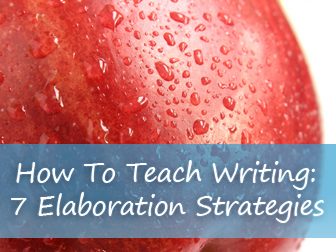
- All topics A-Z
- Grammar
- Vocabulary
- Speaking
- Reading
- Listening
- Writing
- Pronunciation
- Virtual Classroom
- Worksheets by season
- 600 Creative Writing Prompts
- Warmers, fillers & ice-breakers
- Coloring pages to print
- Flashcards
- Classroom management worksheets
- Emergency worksheets
- Revision worksheets
- Resources we recommend
Definition of elaborate(Entry 1 of 2) Definition of elaborate (Entry 2 of 2) intransitive verb transitive verb
Examples of elaborate in a SentenceThese examples are programmatically compiled from various online sources to illustrate current usage of the word 'elaborate.' Any opinions expressed in the examples do not represent those of Merriam-Webster or its editors. Send us feedback about these examples. Word HistoryAdjective and Verb Latin elaboratus , from past participle of elaborare to work out, acquire by labor, from e- + laborare to work — more at laboratory 1592, in the meaning defined at sense 1 1611, in the meaning defined at transitive sense 2 Dictionary Entries Near elaborateEl'brus Cite this Entry“Elaborate.” Merriam-Webster.com Dictionary , Merriam-Webster, https://www.merriam-webster.com/dictionary/elaborate. Accessed 6 Sep. 2024. Kids DefinitionKids definition of elaborate. Kids Definition of elaborate (Entry 2 of 2) Medical DefinitionMedical definition of elaborate, more from merriam-webster on elaborate. Nglish: Translation of elaborate for Spanish Speakers Britannica English: Translation of elaborate for Arabic Speakers Subscribe to America's largest dictionary and get thousands more definitions and advanced search—ad free!  Can you solve 4 words at once?Word of the day. See Definitions and Examples » Get Word of the Day daily email! Popular in Grammar & UsagePlural and possessive names: a guide, 31 useful rhetorical devices, more commonly misspelled words, why does english have so many silent letters, your vs. you're: how to use them correctly, popular in wordplay, 8 words for lesser-known musical instruments, it's a scorcher words for the summer heat, 7 shakespearean insults to make life more interesting, birds say the darndest things, 10 words from taylor swift songs (merriam's version), games & quizzes. 
Definition of elaboration noun from the Oxford Advanced Learner's Dictionary elaboration
Take your English to the next level The Oxford Learner’s Thesaurus explains the difference between groups of similar words. Try it for free as part of the Oxford Advanced Learner’s Dictionary app 
How to Answer “What Does Success Mean to You” Interview Question? Success is subjective and varies, including financial gain, fulfillment, impact, or work-life balance. In interviews , defining success shows your values and how you align with the company’s goals. Prepare by reflecting on achievements, understanding company values, and aligning your goals with theirs. Avoid sharing overly personal details or using someone else's definition of success. Evaluate past successes, align with the company’s mission, and personalize your career success vision. When you're in a job interview , the interviewer might ask, "How do you measure success?" or "What does success mean to you?" These are open-ended questions with no right or wrong answers. They allow you to show qualities employers value, like determination, motivation, drive, enthusiasm, and a team-focused mindset. So, in this guide, we’ll discuss how to give a strong answer to these questions, along with examples of good responses. What Does Success Mean to You?It might seem obvious, but it’s hard to answer this question without considering what success means to you personally. For some, success is about making money . For others, it’s about being happy. While your idea of success may differ, one way to consider this question is by focusing on a positive outcome. This could relate to a work project, a goal, or a task. To determine success, consider the outcomes you want in your work. Here are some examples: Feeling fulfilled Doing meaningful work Having a purpose Being valued and appreciated Being recognized for your contributions Continually growing Making an impact at work, in your community, or with your team Maintaining good health Achieving financial stability Balancing work and life Looking for " jobs near me " and need a little extra help? Yulys is here for you! Whether you’re preparing for an interview or just starting your job search, Yulys offers top-notch employment services to guide you every step of the way. Get started today and take your career to the next level! Why Interviewers “Ask What Does Success Mean To You Interview Question”?What success means to you definition in an interview can reveal a lot about your values, work ethic, and personality. It shows what drives you to excel and what motivates you. Interviewers might also ask this question to see if your values align with theirs and if you share a similar vision. These open-ended questions help interviewers understand if you’re the kind of employee who sets and meets goals. Think of it this way: if you take the personal part out of this question, success simply means something that turns out well. That’s what the interviewer is asking to know if you can achieve good results. If you can communicate that to a hiring manager, you’ll make a strong impression. How to Prepare for This Question?Defining success can be tricky because it's personal and changes over time. There's no single answer for what makes someone successful, and your idea of success will always be unique. This is normal, but you'll need to focus on defining success in a work context for a job interview . To prepare, shortlist your recent achievements or times when you accomplished something important. Think about your goals, milestones, and moments when you positively impacted others. Here are some examples: Did you meet a sales target? Did you start a new employee resource group after it was a company goal for months? Did you begin saying "no" to clients, allowing you to focus on launching a new product for your company? Did you try something new at work? If it didn't work out, did you learn something valuable for the future? Mistakes to Avoid When Answering What Does Success Mean to You EssayIt's helpful to know what not to say when answering this question. Here are some common mistakes to avoid: Don't share overly personal information about your family or yourself. Don't discuss your political or religious beliefs. Don't forget to keep your answer professional. Don't use someone else's definition of success. Don't make your response sound robotic. Remember, they want to hire a real person, not someone perfect! How to Answer What Does Success Mean to You?Defining success is personal and can vary greatly from one person to another. It's easy to get caught up in how others measure success, but it's important to focus on what it means to you both as an individual and an employee. To help you craft your answer for a job interview , here’s a three-step method that can guide you in defining and communicating what success looks like to you: 1. Evaluate Your Past SuccessesBefore discussing future success, reflect on your past achievements. Consider the successes (and failures) you've experienced, your strengths (and weaknesses), and your long-term goals. This reflection will help you identify patterns in your past successes that can inform your definition of future success. Take a moment to think about your past wins. What challenges did you overcome to achieve them? What did you learn about yourself in the process? By understanding your past accomplishments, you can articulate how you plan to succeed in your future role. Example Answer: "Success, to me, is about learning and growing in a role. In my last position as [JOB TITLE], I accepted a challenging project that required a significant learning curve. I learned new skills while completing [PROJECT] and achieving [RESULT]. Success, to me, is about continuous improvement and being open to learning." Specific Examples of Achievements to Consider: Organized schedules or logistics for the executive team Collaborated with other departments Improved or reorganized processes Onboarded and trained new team members Solved problems or implemented new ideas Increased revenue, sales, or customer retention Managed budgets or saved the company money Contributed to good customer service or operational efficiency 2. Understand the Organization's Definition of SuccessWhen interviewers ask about your definition of success, they often look to see if your values align with the company's culture and mission. They want to know if you’re a good fit for the organization. Before answering, research the company’s mission statement, core values, and culture. Make sure your goals align with what the company prioritizes. Whether the focus is collaboration, innovation, or revenue growth, tailor your answer to reflect the company’s values. "I know that [COMPANY] places a strong emphasis on [VALUES]. For me, success means working collaboratively with a team to create impactful solutions while upholding these core values. I believe aligning with [COMPANY]'s mission is key to achieving meaningful success." 3. Define What a Successful Career Looks Like for YouThis is where you can personalize your answer. Think about what success looks like for you in the short term and long term. Consider how your past experiences and the company’s values align with your career goals. Success can mean achieving specific workplace goals, stepping out of your comfort zone, or growing into a leadership role . It can also mean learning from past failures and using those lessons to improve. "I define success as the combination of [COMPANY VALUE] and determination to achieve a goal. I feel a project has been successful when I see real growth in my skills and abilities. At [COMPANY], I would consider my first success to be joining the team. From there, I would build on that success by taking advantage of learning opportunities and collaborating with the talented individuals here." Are you hiring new employees? Yulys makes it easy! With our platform, you can post a job and connect with top talent quickly. We offer free job posting opportunities, so you can attract the best candidates without breaking the bank. Get started today and find your next great hire with ease! When asked "What does success mean to you," it's important to define it in a way that reflects your own values and goals. Whether in a job interview or in life, understanding what success means to you can guide your decisions and keep you focused on what truly matters. Remember, your definition of success is personal, so keep it simple, authentic, and aligned with your own aspirations. What Does Success Mean To You?Success means reaching goals that bring personal and professional satisfaction while enjoying the journey and making a positive impact on others. Millions of jobs for you. Verified by us.Small businesses with less than 100 employees Yulys Provides You Free Jobs PostingSmall businesses with less than 100 employees that need to post one or a few jobs can easily create stand-out job postings with the Get The Latest Updates From YulysSubcribe to our Newsletter Become a part of our growth newsletter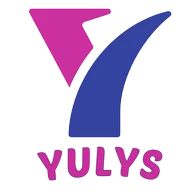 GET THE YULYS APPQuick links.
©YulysLLC - 2024 All Rights Reserved | Terms of Service | Privacy Policy | Data Deletion What does “pain” mean, medically? From Wharton to Ellison and Hayes, literature has answersPeople in this story.  Sari Altschuler At first glance, the study of literature and the medical field don’t seem to have much, if anything, in common. But their intersection has a surprisingly rich history. “There used to be poetry in medical texts,” says Sari Altschuler, an associate professor of English at Northeastern University. “And if you talk to doctors, many of them want to be writers. That tradition is hundreds and hundreds of years old.” She found herself thinking about that tradition in the early days of the COVID-19 pandemic, particularly how people were turning to literature to grapple with pain — a collective pain that was both highly visible in the protests after George Floyd’s killing and obscured behind closed doors in hospitals and isolated households. “There was a lot of reading [works like] Defoe’s ‘A Journal of the Plague Year’ or ‘Love in the Time of Cholera’ … these books that were supposed to provide some way of making sense of what was happening,” she says. Others in her academic community were thinking about it, too. Thomas Constantinesco, a literature professor now at the Sorbonne, was at work on the book “Writing Pain in the 19th Century,” when the pandemic hit. Just before, with grant money from the Marie Curie foundation, he and Altschuler had put together a symposium calling for papers examining the intersection of pain and writing. “The essays were so great,” Altschuler says. “We thought, we should really try to pitch them somewhere.” Read more on Northeastern Global News. More StoriesGeorgia school shooting is a reminder that mass killings are tragic but rare, northeastern criminologist says, election 2024: do “crypto” enthusiasts actually make up a significant voting bloc.  Banned in Brazil: The world is moving toward greater regulation of social media, two Northeastern experts say |
COMMENTS
Learn what elaboration means in an essay and how to do it with different techniques and strategies. Find examples, tips, and elaboration stems to spark your writing.
can apply to your writing: Explain: simply expand on your established point in. ear, straightforward terms. Illustrate: provide a specific example that. ws your idea in practice. Describe Literally: write about the subject's qualities/e. ile, personification, etc.) Narrate: relate a personal.
Elaboration is the process of presenting and developing an idea by adding more detail to explain it. Learn how to teach elaboration in writing with activities, questions, charts and strategies for informational and opinion genres.
For expanding a paragraph, there are three overarching strategies: elaborating, extending and enhancing (Halliday & Matthiessen, 2004). Each can be linguistically explained, and deserves a separate post. This post will focus on the first "E": elaborating. Elaboration refers to how a meaning construed in one sentence makes that in the ...
It's been helpful to introduce different strategies and spiral back as needed. Elaboration Strategies: Asking questions. Students can ask where, how, what kind, and why to add more details. While the added details (and specific questions) may look different in a narrative vs. an informational writing piece, the strategy works either way.
Elaboration is the process of explaining a sentence with further details. The addition of details to the given information helps to enhance clarity and make your writing impactful. Elaborating a sentence depends on the purpose and the need of the audience. Generally, sentences can be elaborated using real-life experiences, definitions, examples ...
The elaboration of narrative essays also requires description of actions, physical states or internal states. With actions, the writer might tend to focus on breaking down a pivotal moment into logical and organized replays. With physical states, the writer might elaborate on what things in the story sound like, smell like, taste like and feel ...
Harvard College Writing Center 3 Similarly, if you're asked to compare sources or consider sources in relation to each other, it is not enough to offer a list of similarities and differences.
Learn how to analyze and elaborate on your points in academic writing by asking probing questions. See an example of how to use probing questions to interpret a passage from F. Scott Fitzgerald's short story "May Day".
Basically, elaboration means provding more specific details. So, if you have been asked to use more elaboration in your writing, you need to explain everything you have covered in your writing in greater detail. This will make your writing stronger and more impactful. Answered by Editage Insights 24 Oct, 2017. Resources for authors and journals.
Annotate. As a class, re-read the text, looking specifically for evidence that would support a claim. Have students annotate or highlight lines that would work to support the topic sentence and claim. Try working through this together as a class to begin. Then, ask them to do the same thing for a different chunk of the text in small groups.
Elaboration: Anatomy of an Essay. Eula Biss, Joan DIdion, and Robert Graves. Robert Graves fought in the trenches of the First World War, after which he wrote a memoir called Goodbye to All That in 1929. Later, Joan Didion wrote an essay called "Goodbye to All That" about her experiences as a young woman working at Vogue in New York ...
In essay writing, this means the author finds enough information to support a thesis, and also finding information that is credible and accurate. Sufficiency, however, is not enough. ... Information is the key to developing support and elaboration in the expository (essay) genres — informational, critical, and argumentative writing. While ...
Expert Answers. In the composition of essays, narratives, analyses, dissertations, etc., support and elaboration are essential in order to develop the main points of the work. Without elaboration ...
One of the best ways to teach elaboration in writing is through modeling. By walking students through the process, teachers can show them how to add details and expand their thoughts. Using examples from mentor texts or personal writing helps students see how professionals elaborate in their work. This strategy gives students a clear ...
Elaboration means "adding details." Kids are famous for answering "good" when asked how school was and "nothing" when asked what they did there. If pressed for elaboration, they might talk about recess, lunch, and even what they learned.
Here is how elaboration will be different for each type of writing. Narrative Essay - Students tell a story and elaborate with details by describing a specific moment. The goal is to help readers picture the scene and feel like they're in the story. Informational or Expository Essay- Students teach the reader about a topic in this type of ...
Step 2: Write your initial answer. After some initial research, you can formulate a tentative answer to this question. At this stage it can be simple, and it should guide the research process and writing process. The internet has had more of a positive than a negative effect on education.
Make a claim. Provide the grounds (evidence) for the claim. Explain the warrant (how the grounds support the claim) Discuss possible rebuttals to the claim, identifying the limits of the argument and showing that you have considered alternative perspectives. The Toulmin model is a common approach in academic essays.
ENTATIVE PERFORMANCE TASK FULL WRITESFor argumentative writing, elaboration is the process of providing supporting details to explain, analyze, i. lustrate, or develop key information. In the lower grades (opinion writing), writers elabo. ate on reasons that support opinions. However in grades 6 and up (argumentative writing), writers integrate ...
Elaboration: 7 Writing Strategies. 1. Describe a Place in Detail. It is easy for any writer to mention a place without really telling the reader much about it. Encourage your students to go back through a piece they have written and look for a mention of a place. There may be a personal narrative or story that he was writing when he got so ...
The meaning of ELABORATE is planned or carried out with great care. How to use elaborate in a sentence.
Definition of elaboration noun in Oxford Advanced Learner's Dictionary. Meaning, pronunciation, picture, example sentences, grammar, usage notes, synonyms and more.
Oaths have their sinister uses. They can turn into weapons to coerce and restrict. The solemn oath, of course, is not a bad way to lie. The Mafia enforces silence with an oath, and the blood oath ...
When asked "What does success mean to you," it's important to define it in a way that reflects your own values and goals. Whether in a job interview or in life, understanding what success means to you can guide your decisions and keep you focused on what truly matters. Remember, your definition of success is personal, so keep it simple ...
What does "pain" mean, medically? From Wharton to Ellison and Hayes, literature has answers. People in this story. Sari Altschuler. At first glance, the study of literature and the medical field don't seem to have much, if anything, in common. But their intersection has a surprisingly rich history. ... "The essays were so great ...